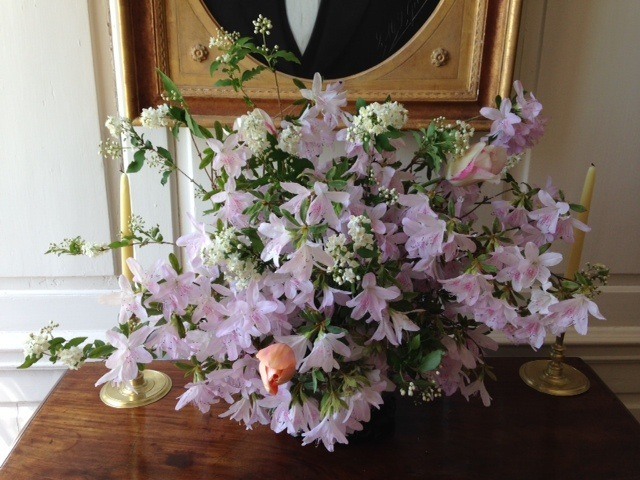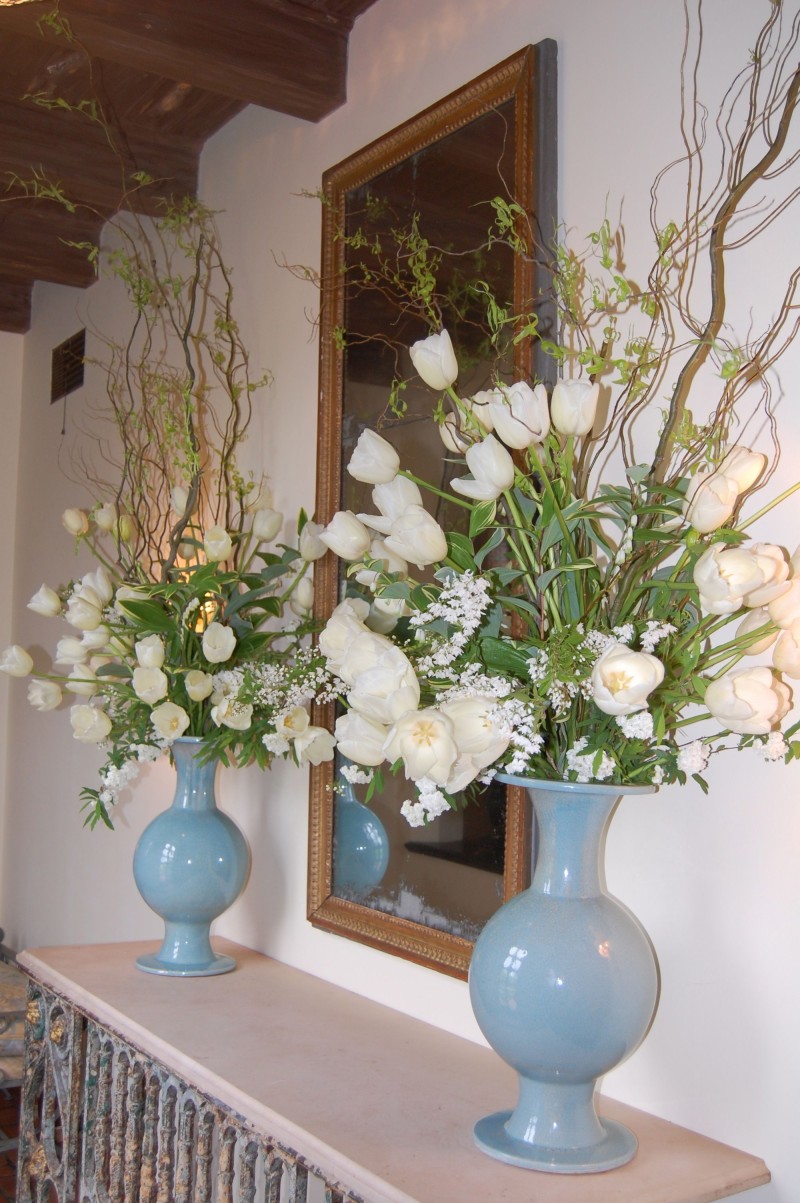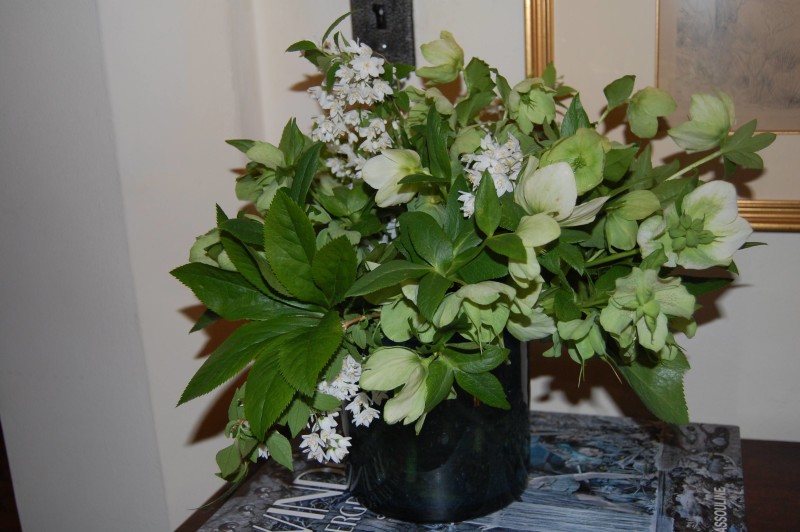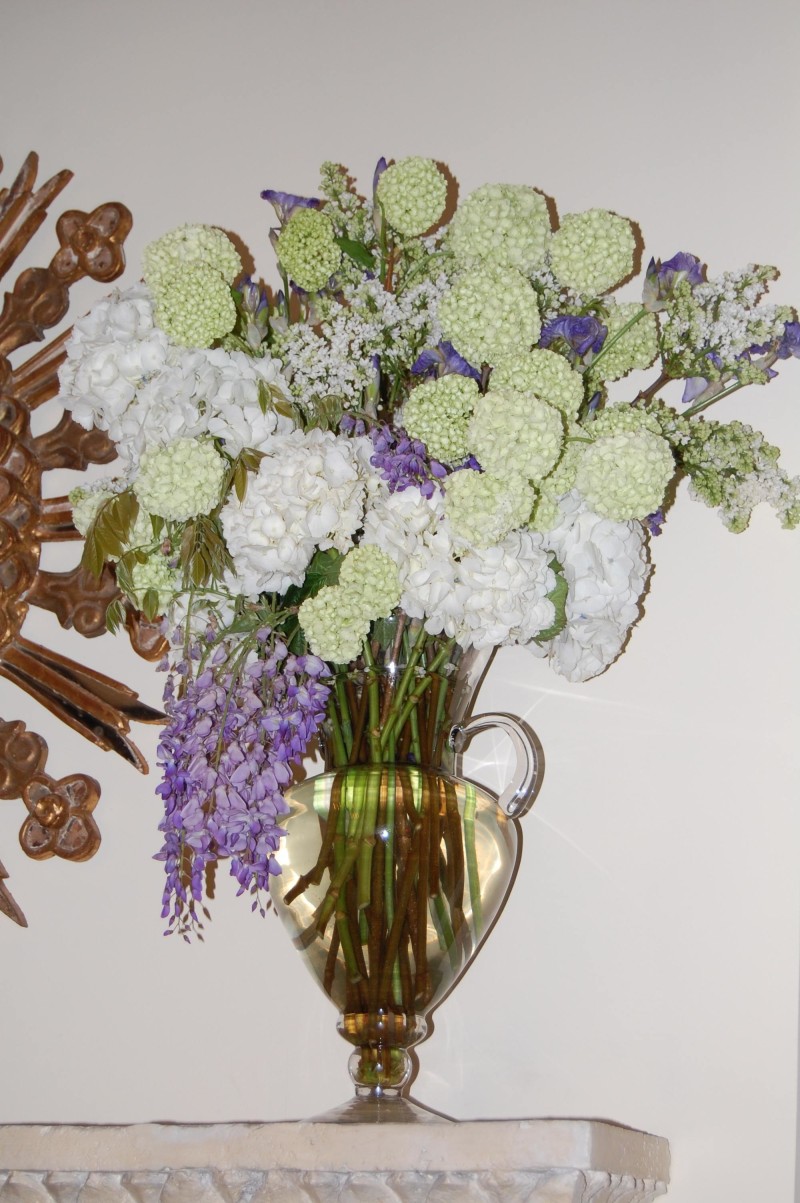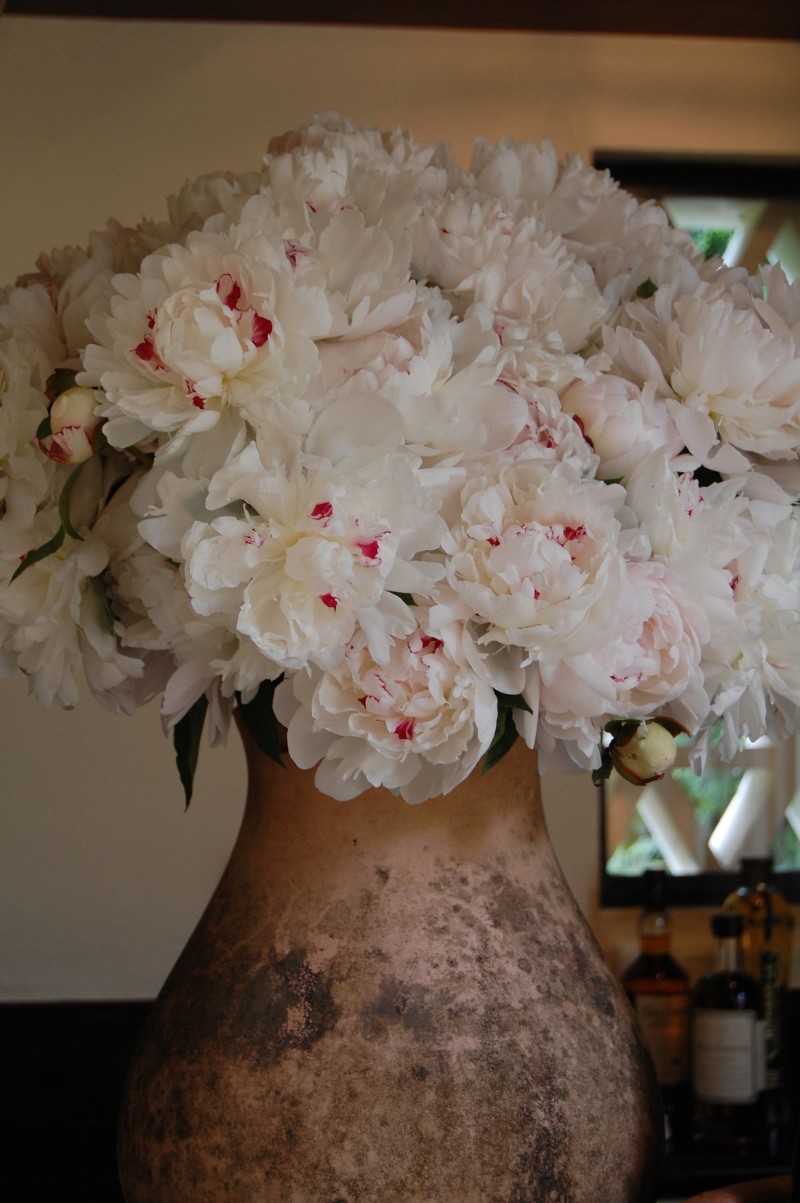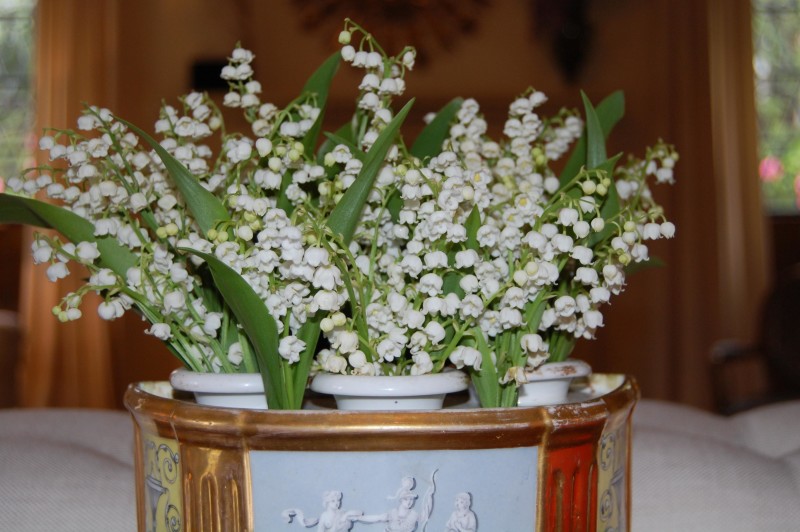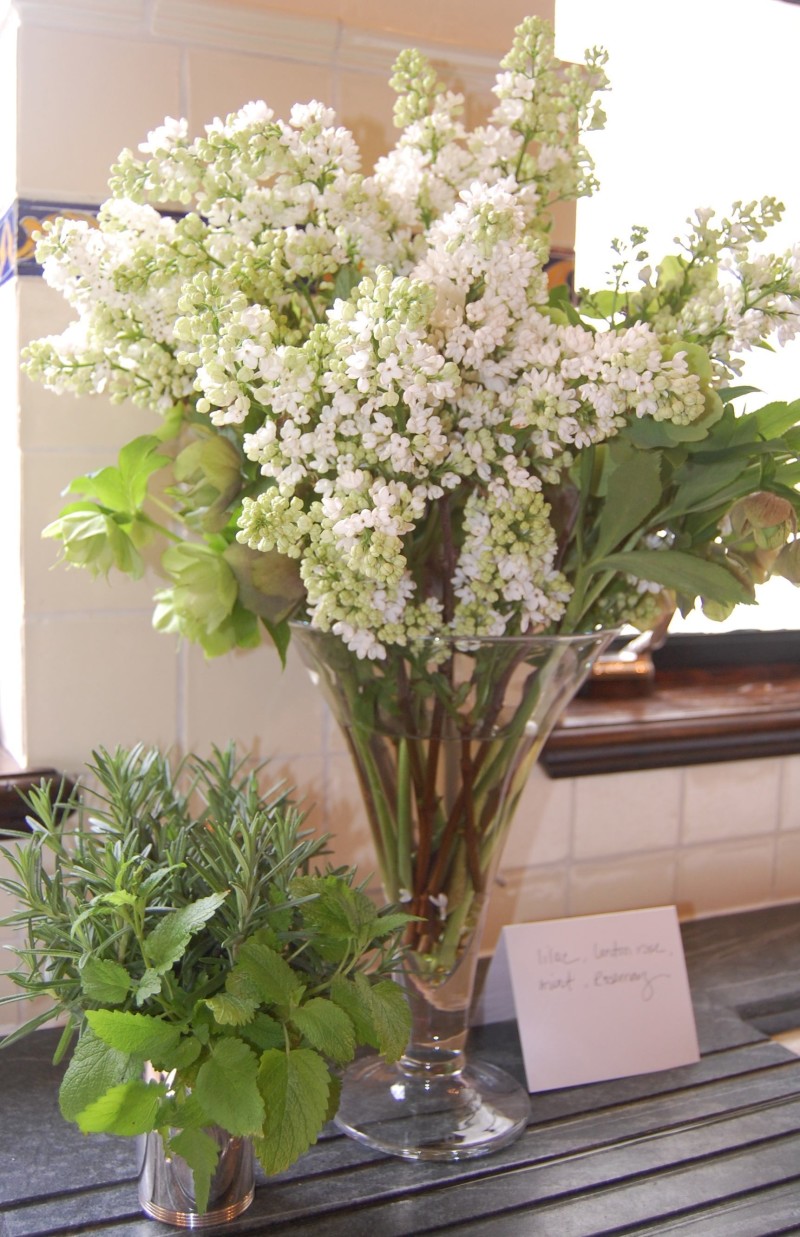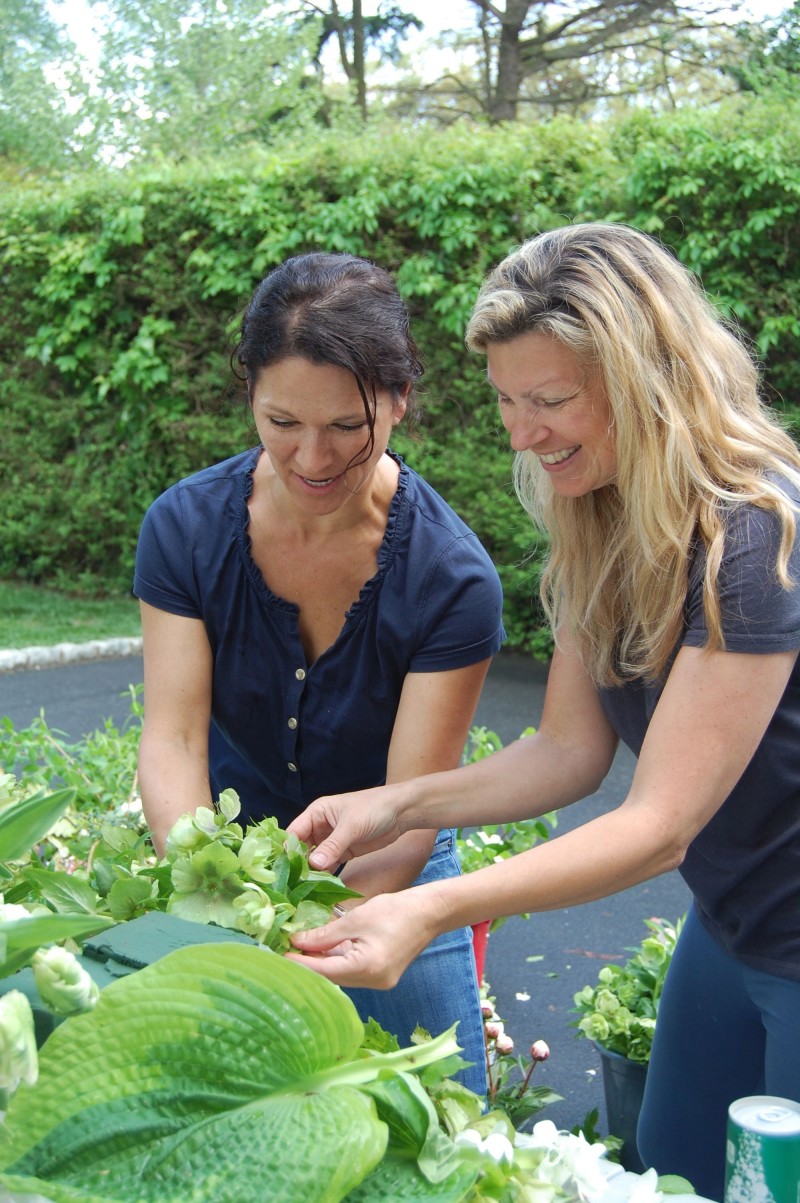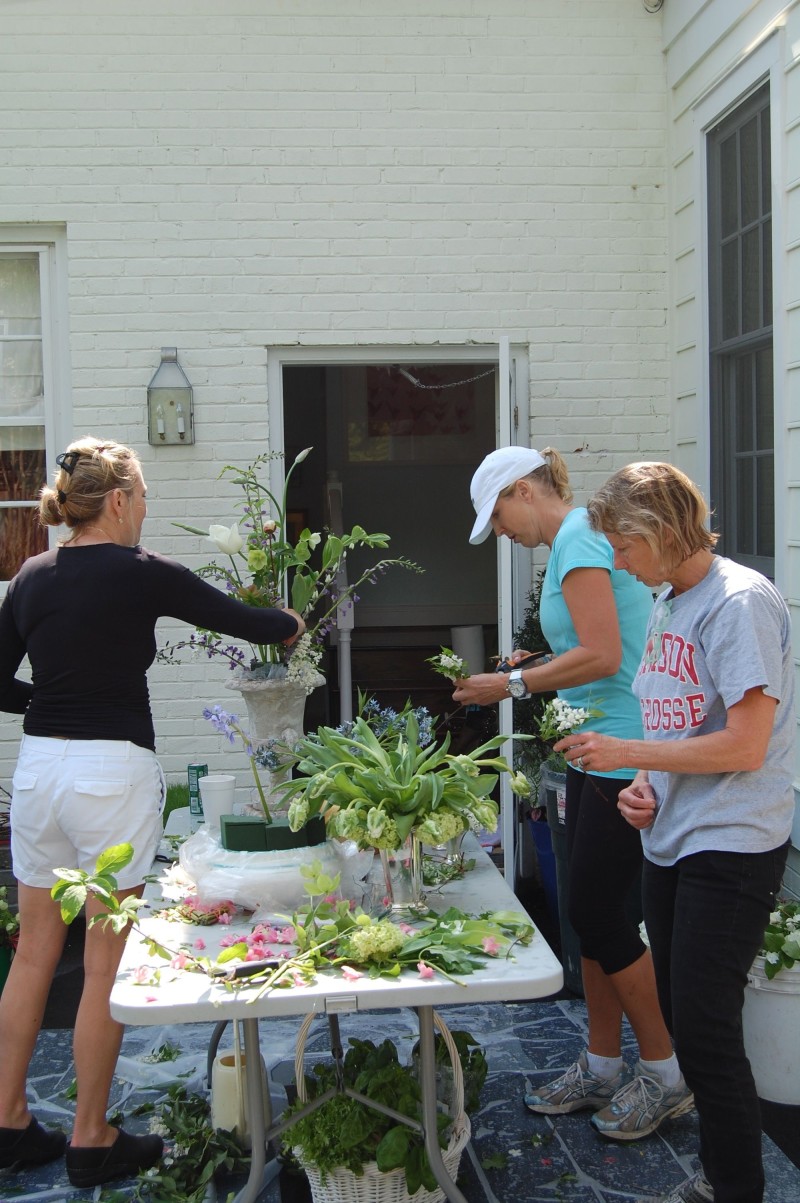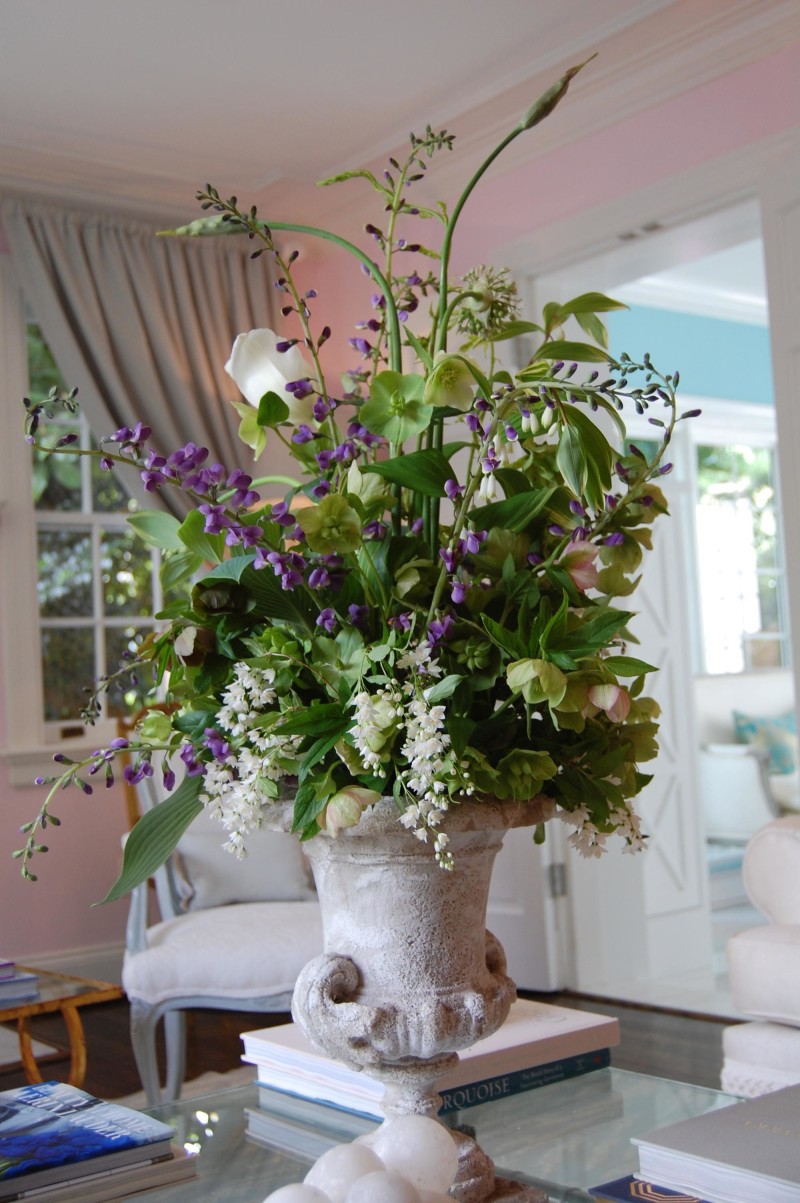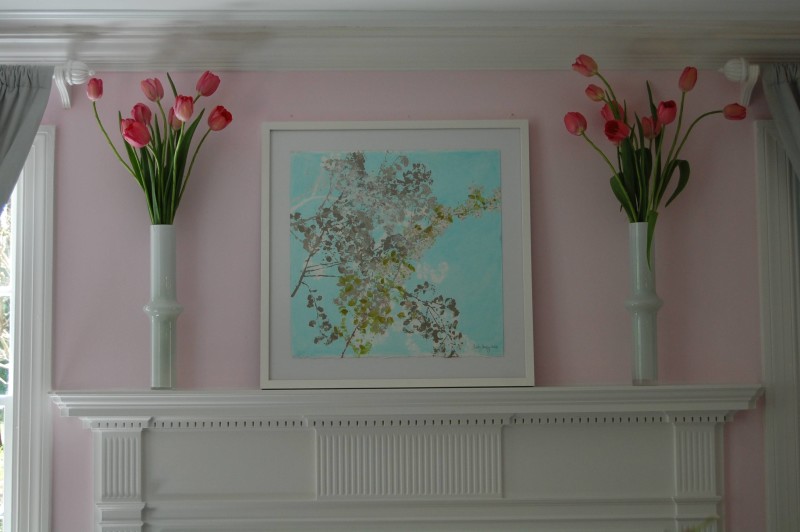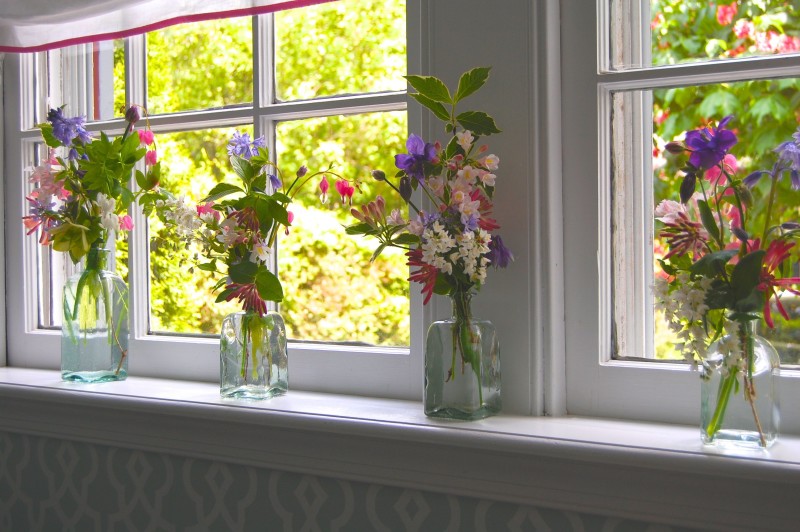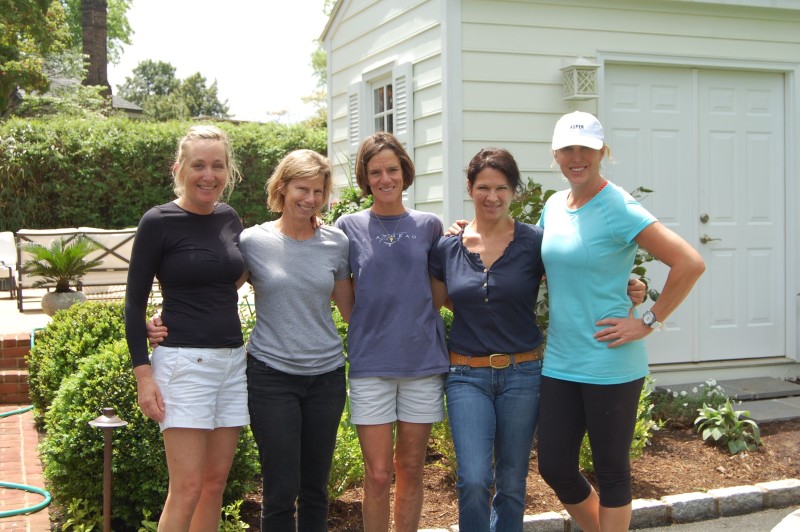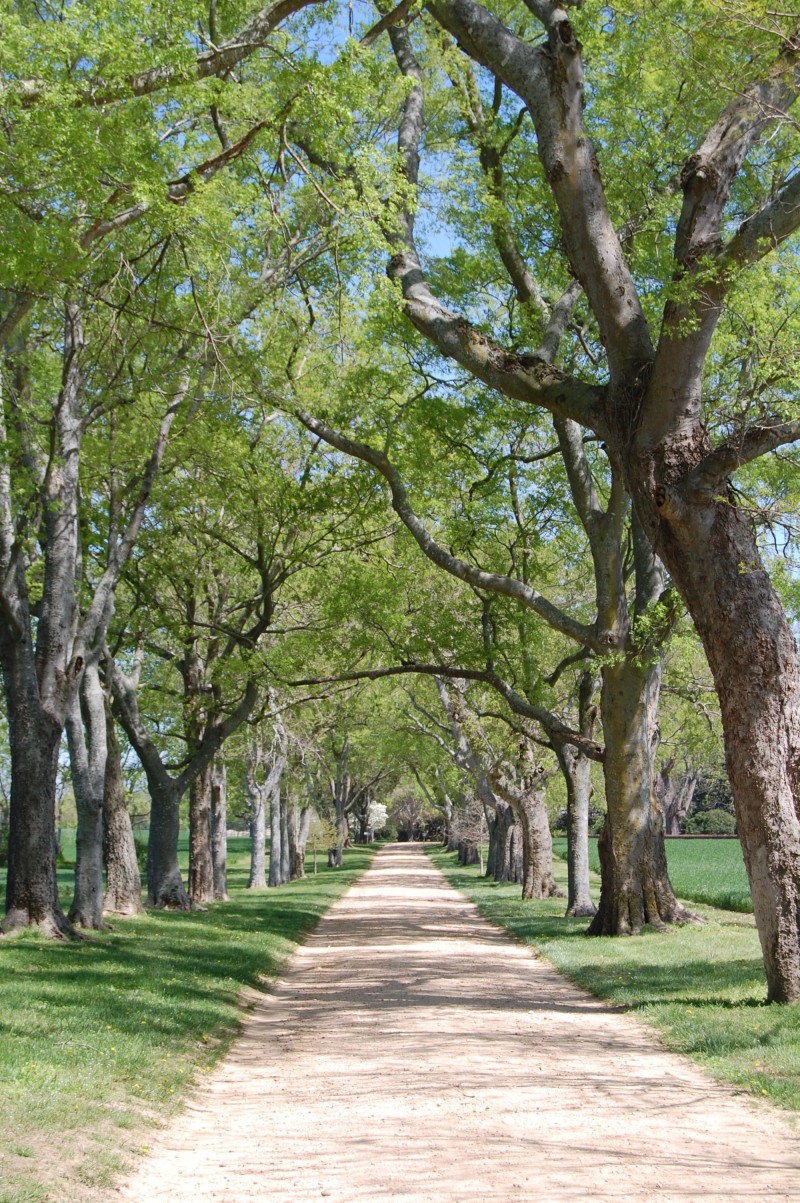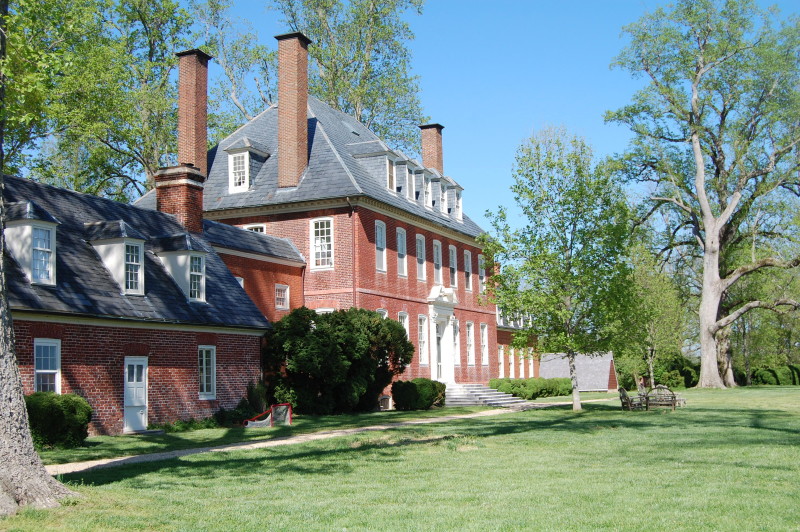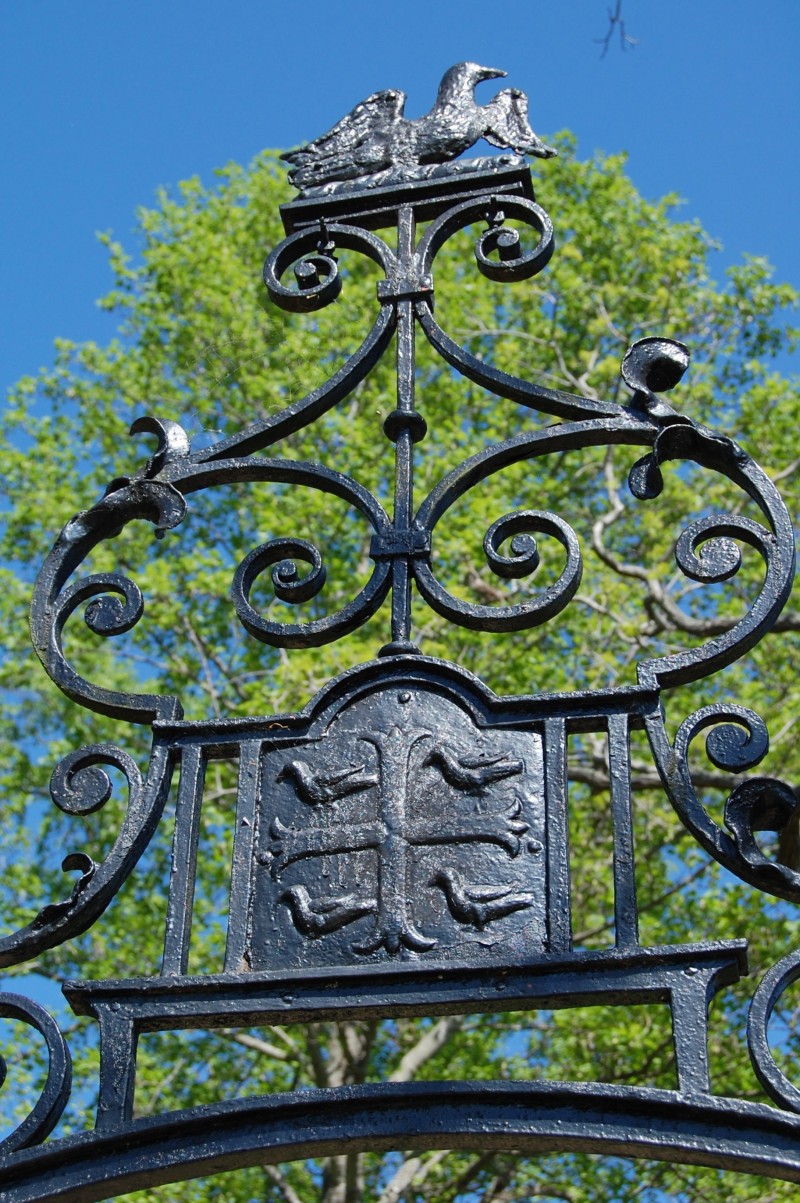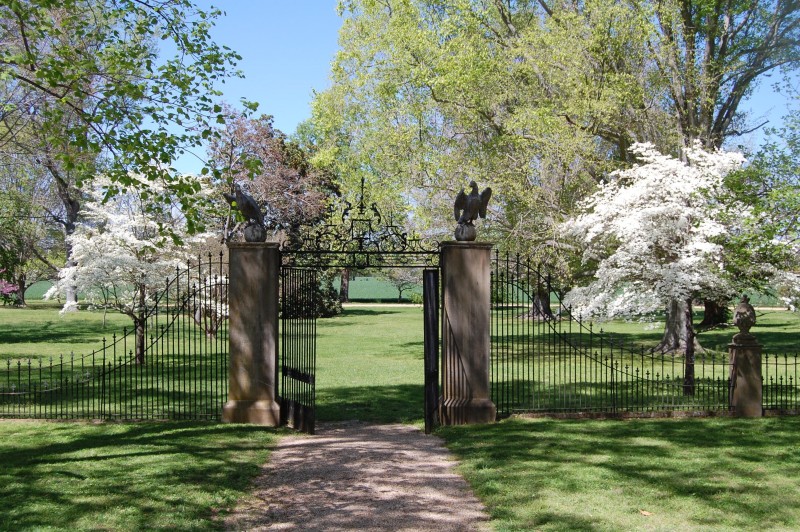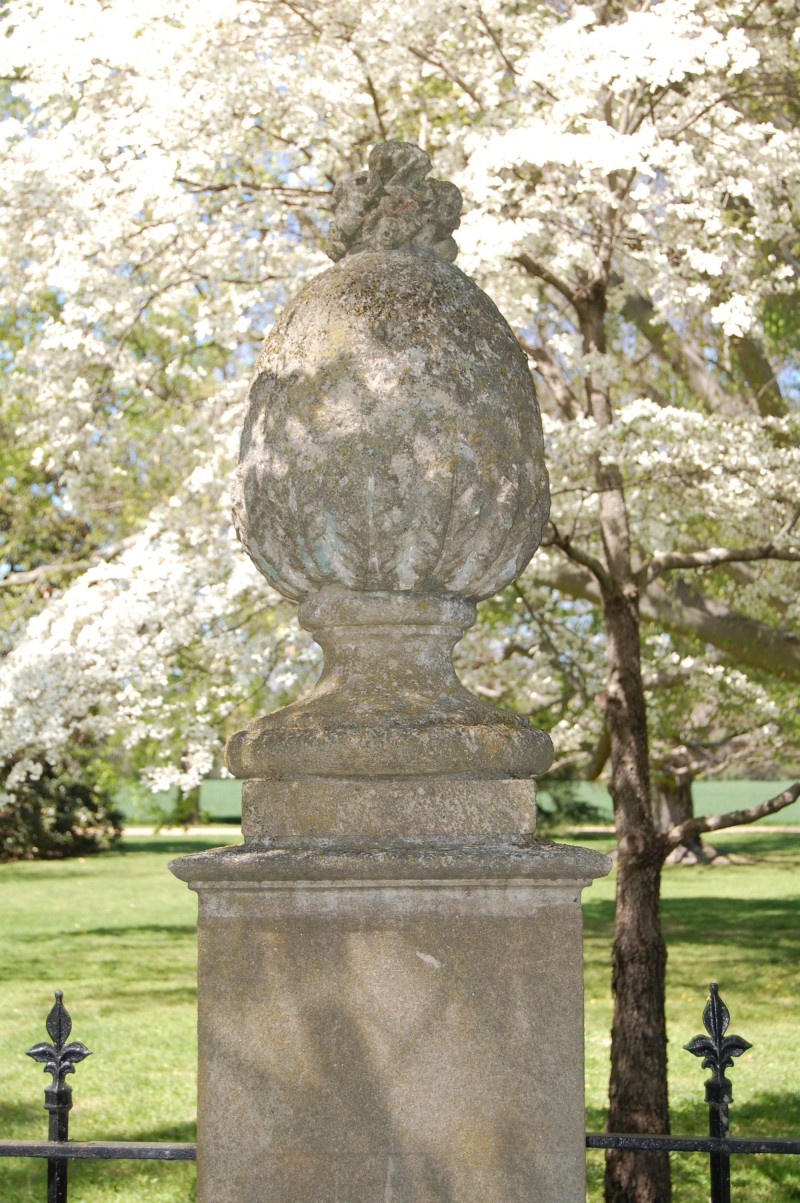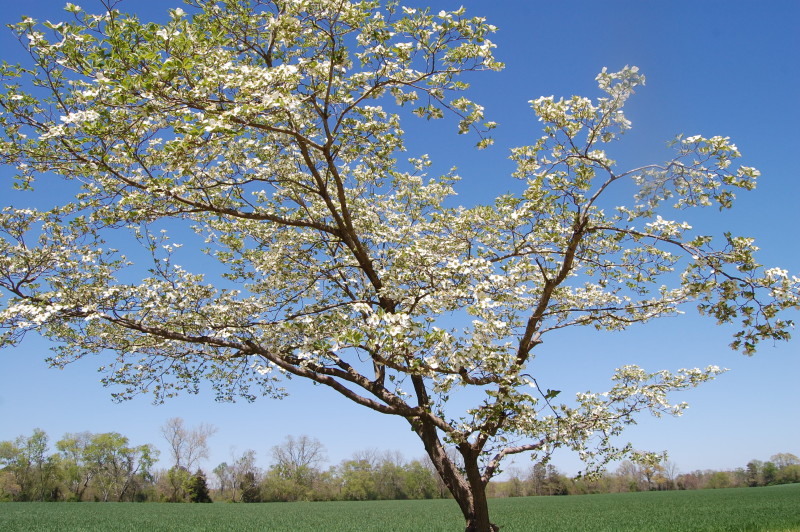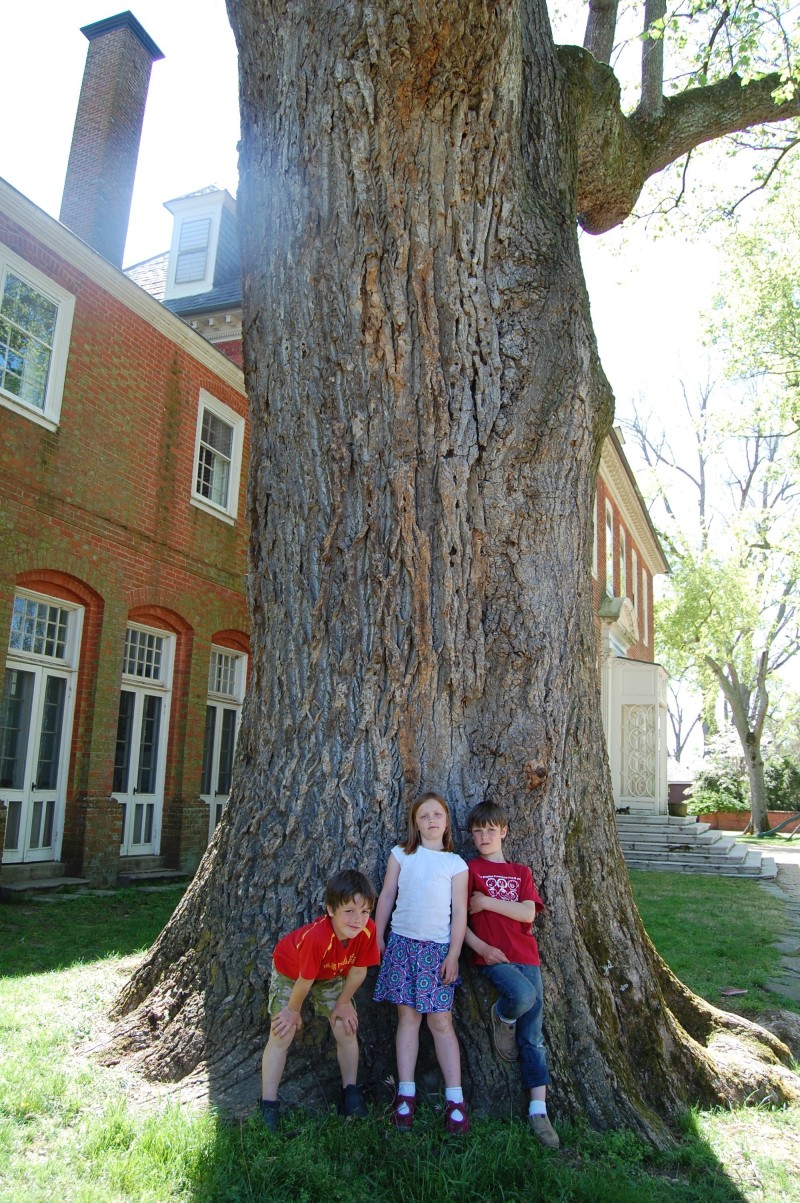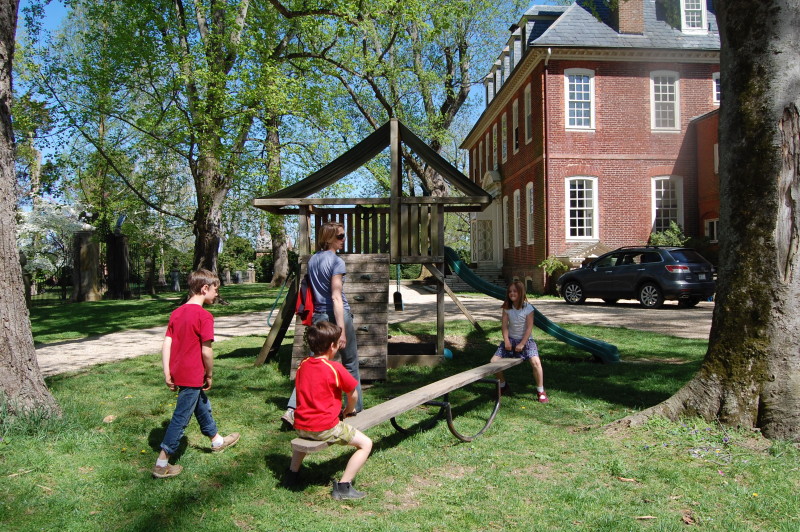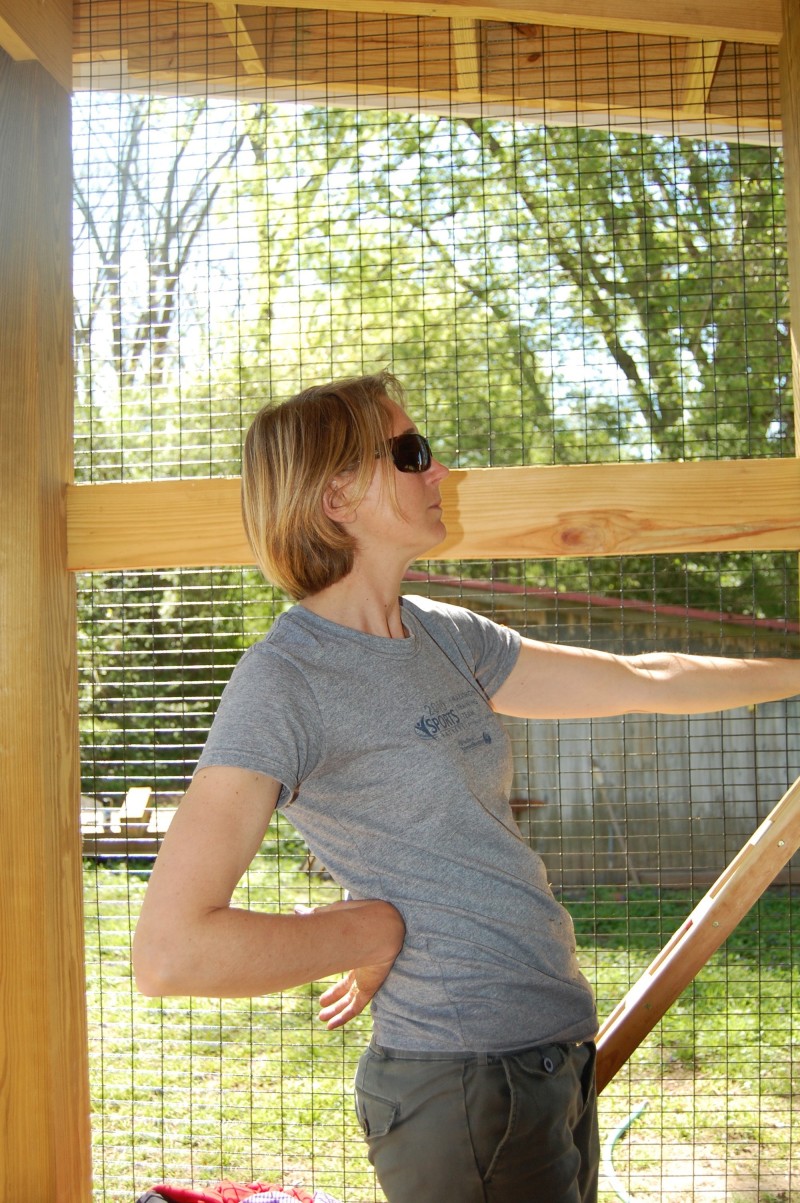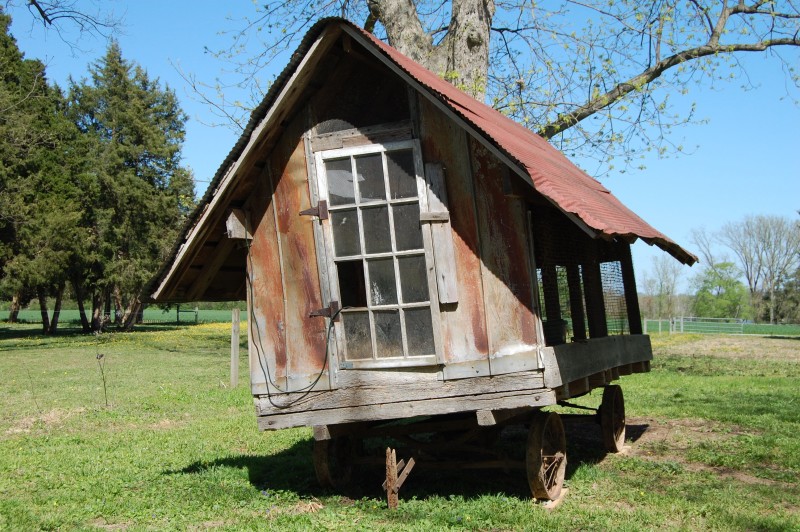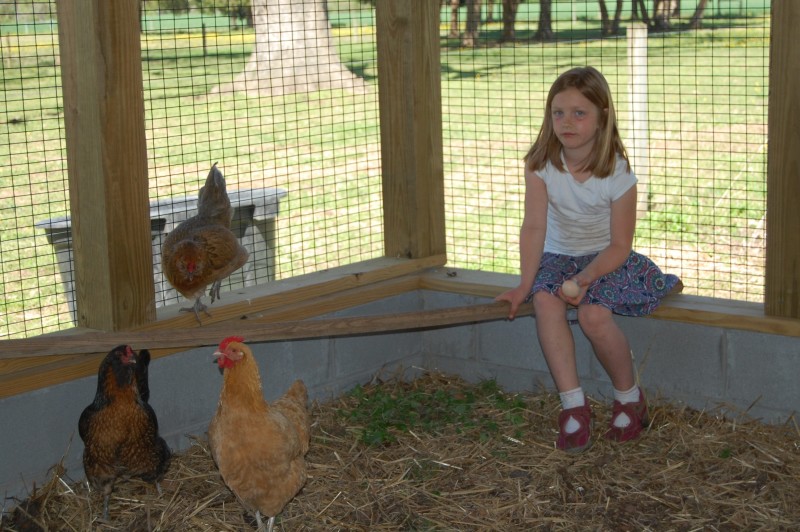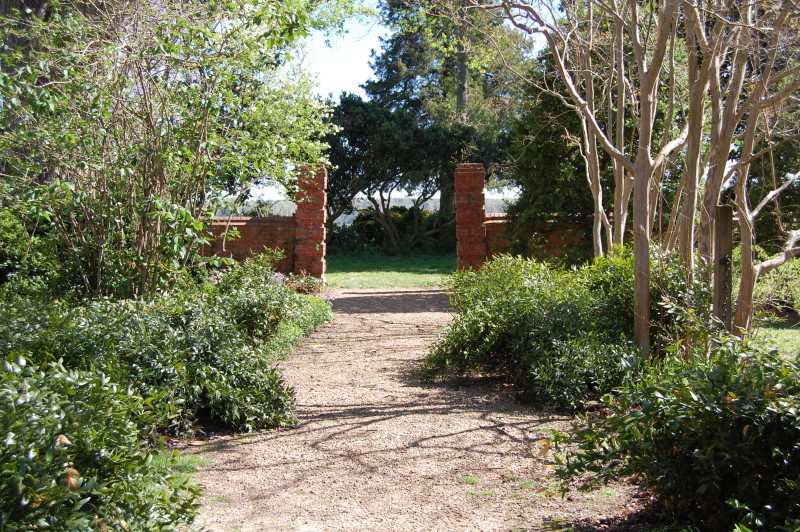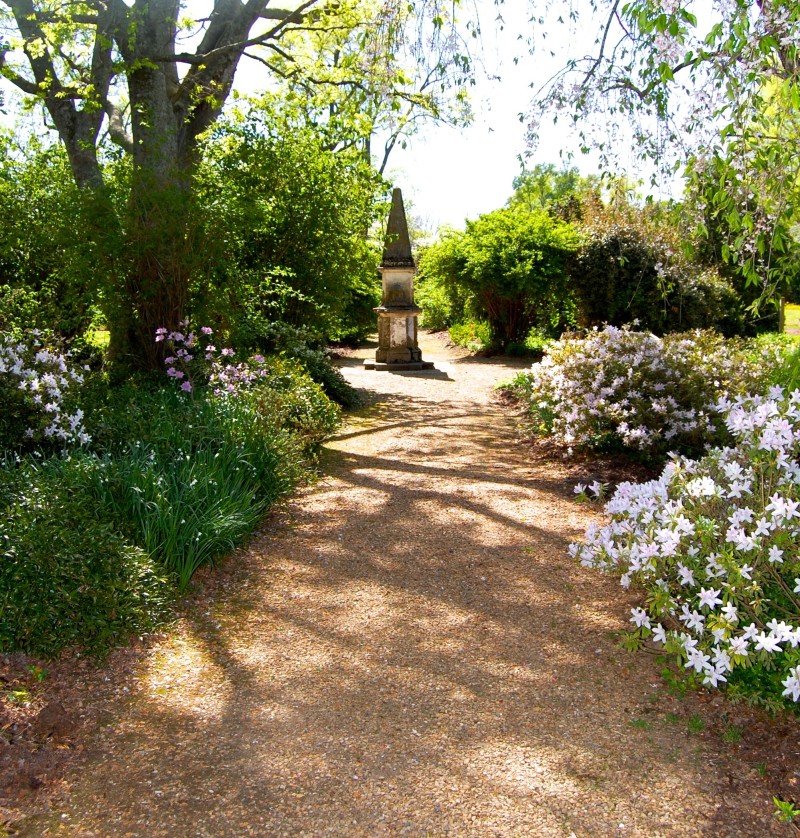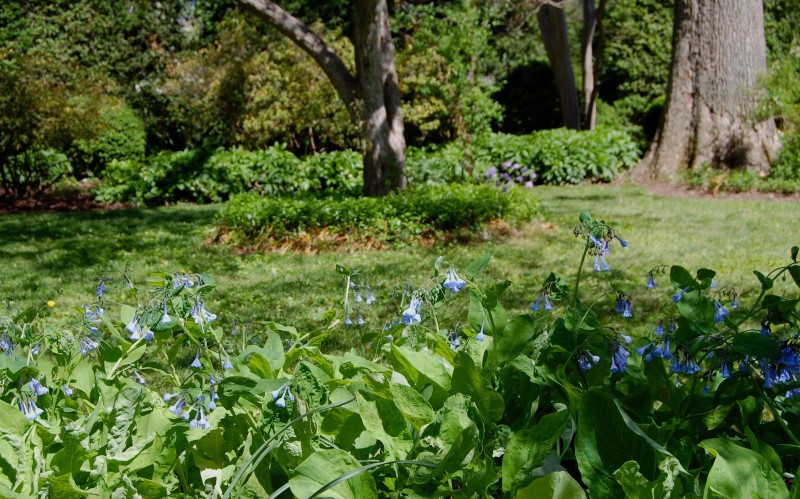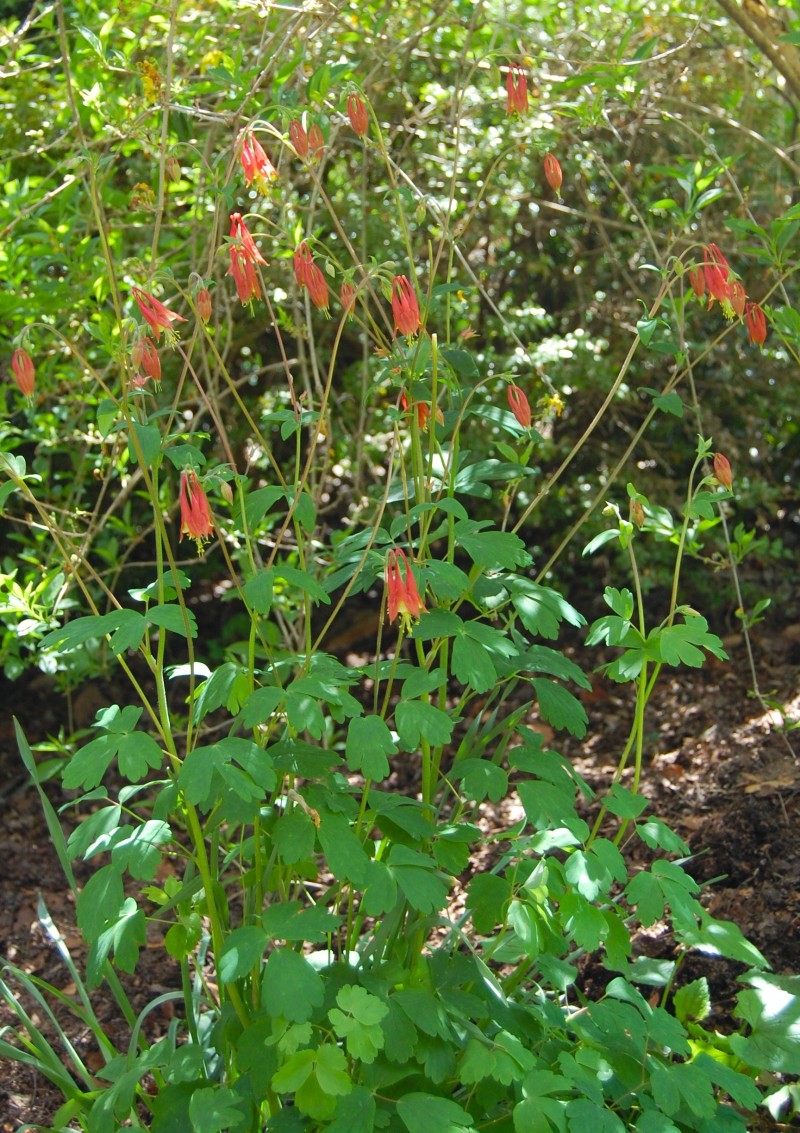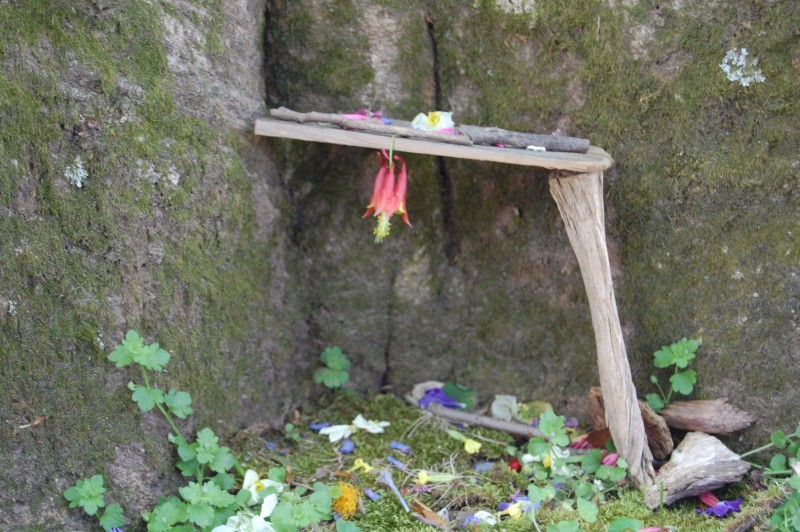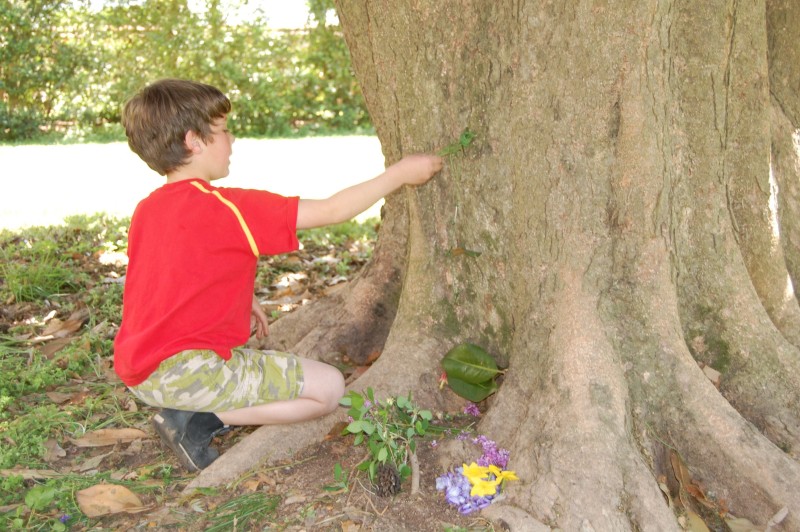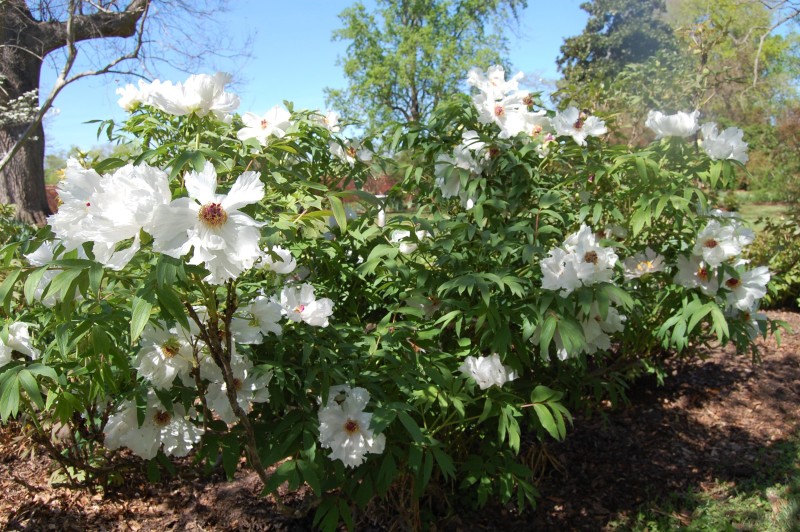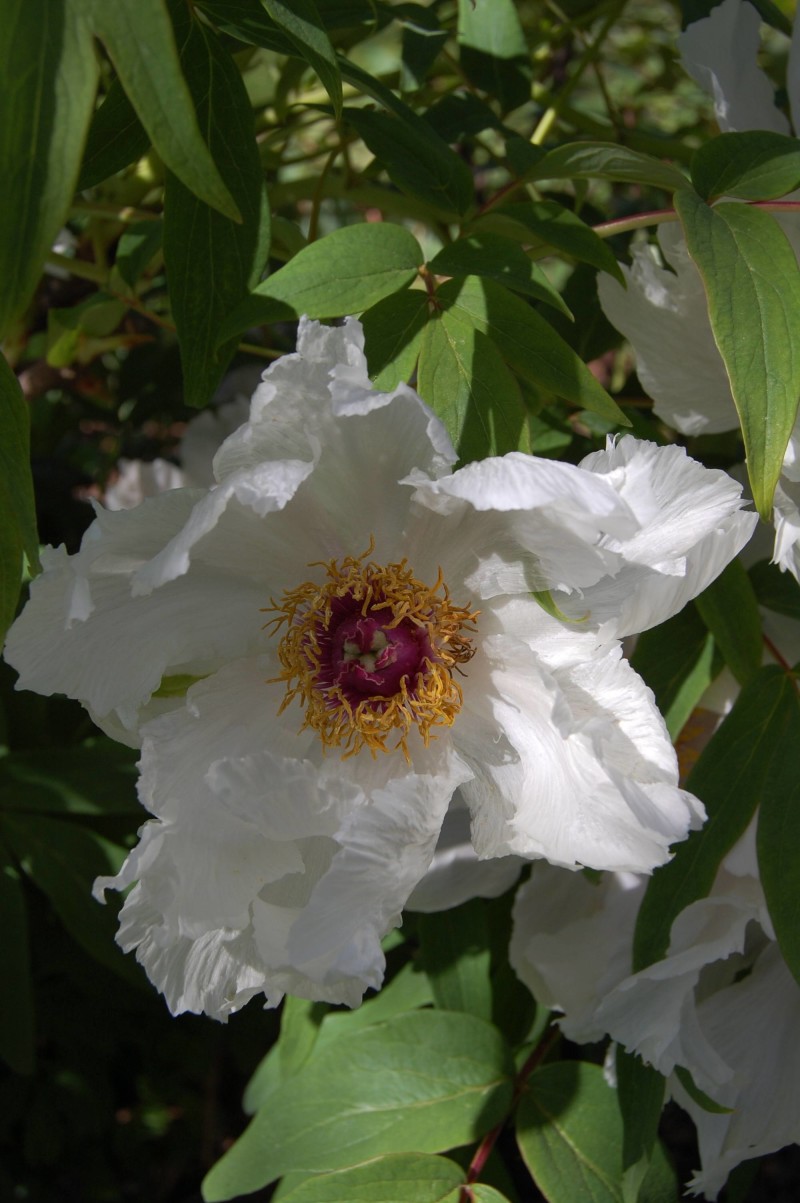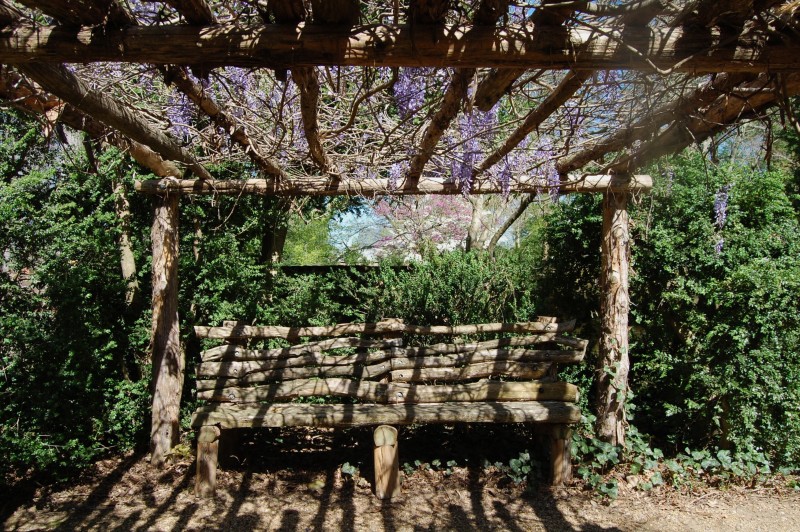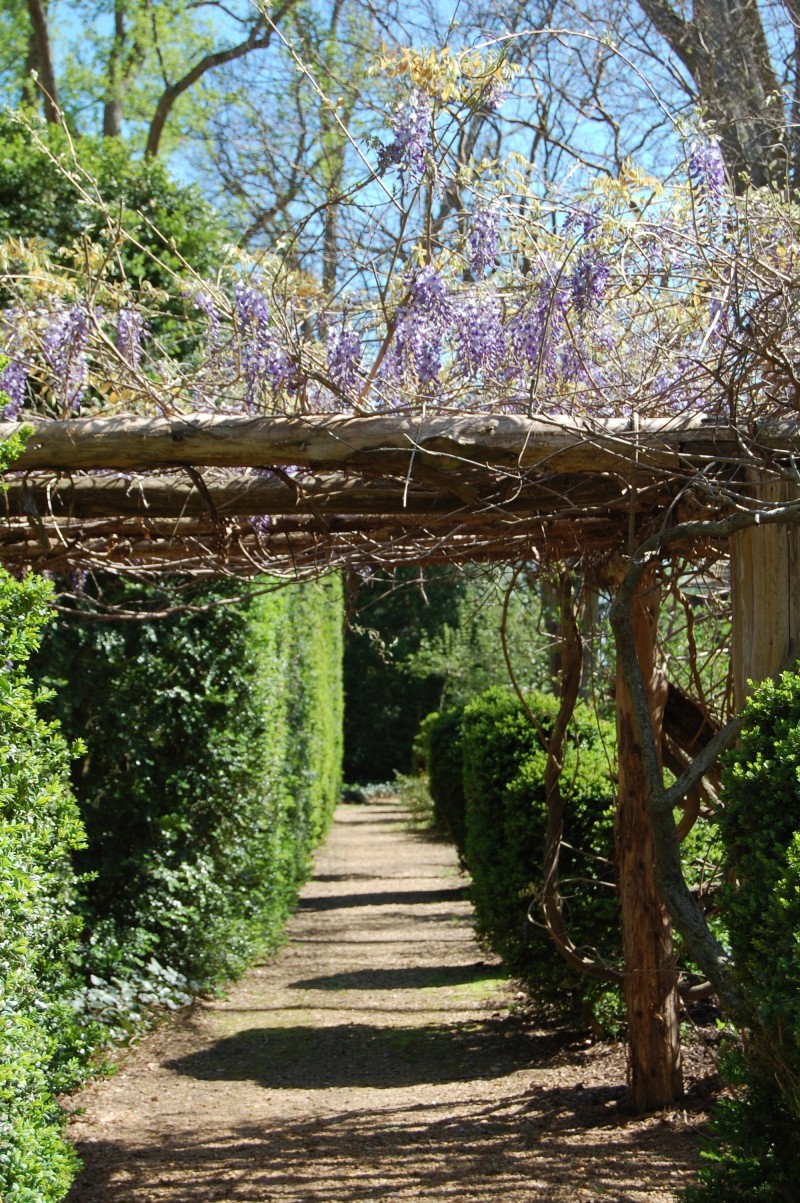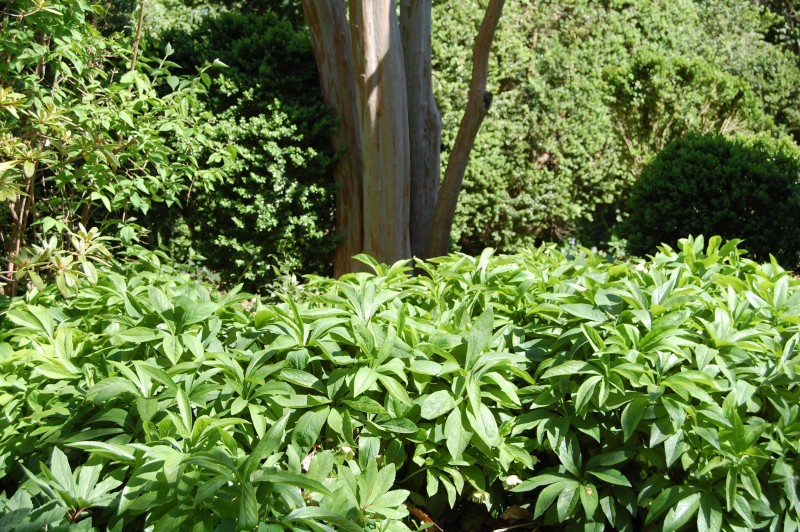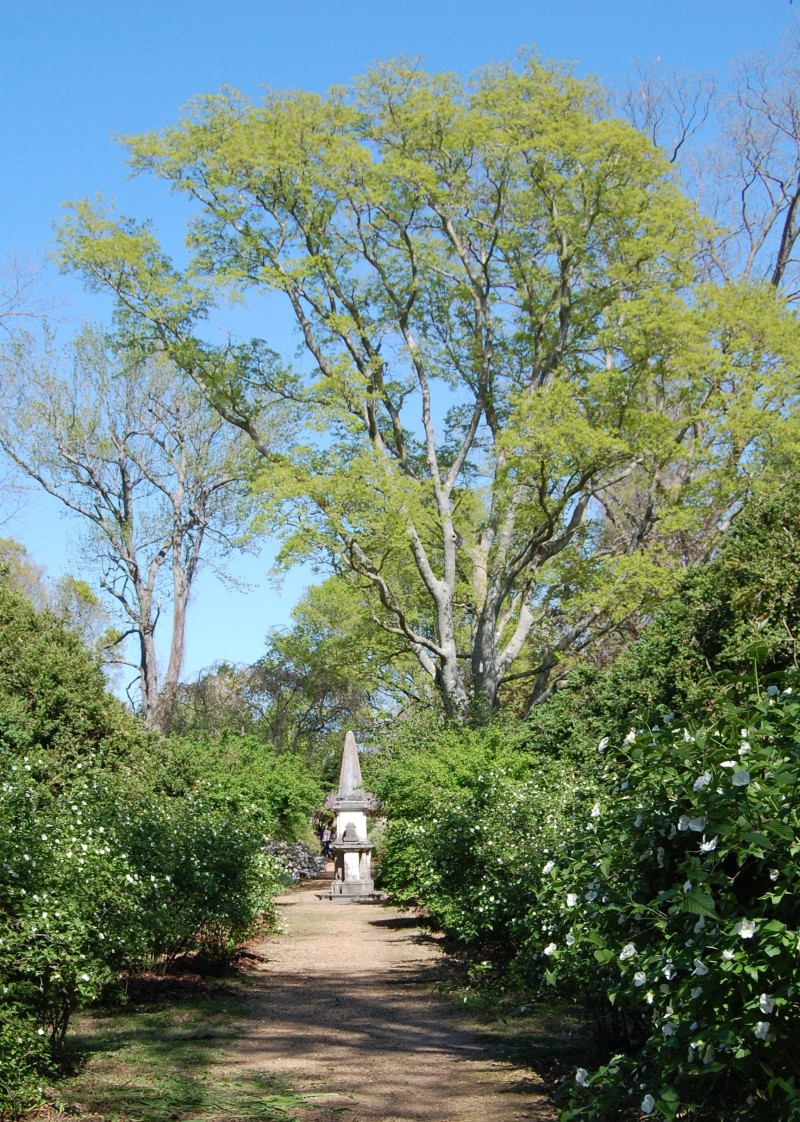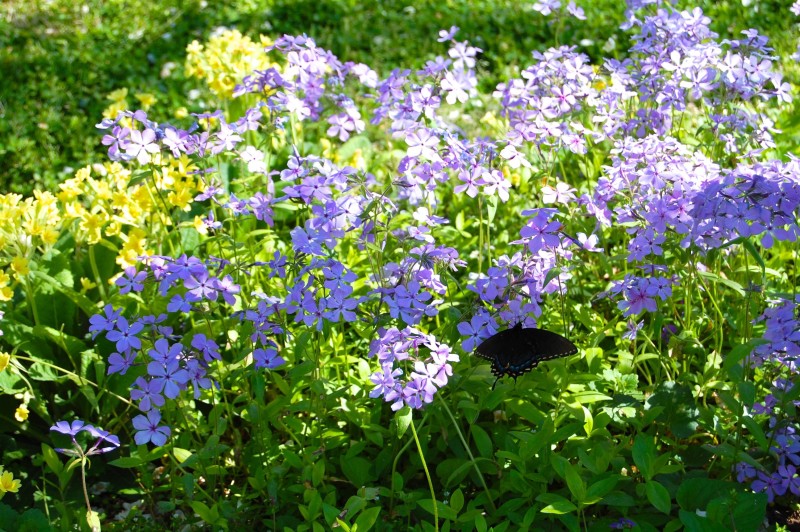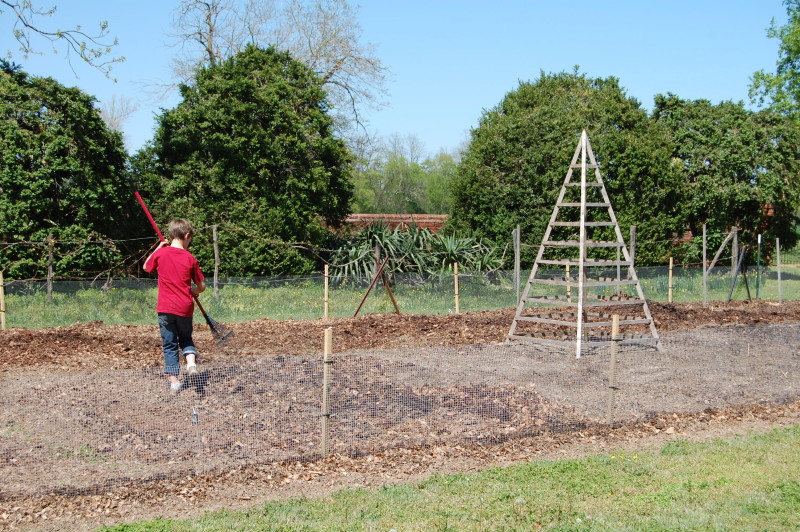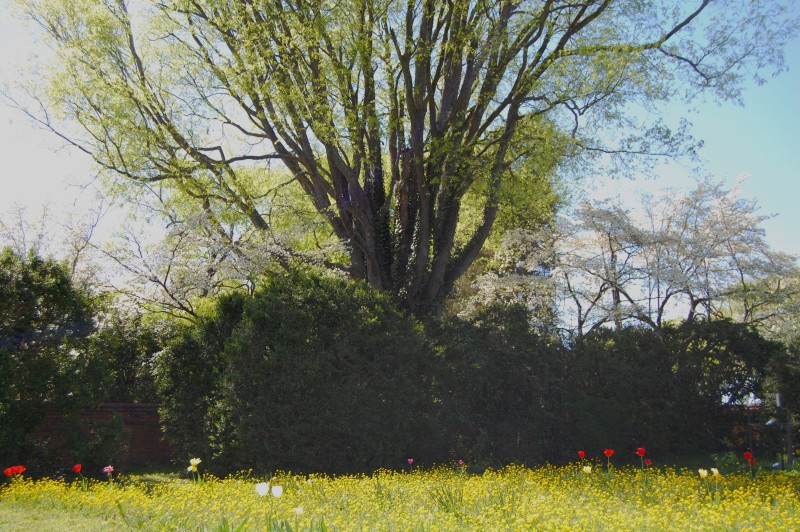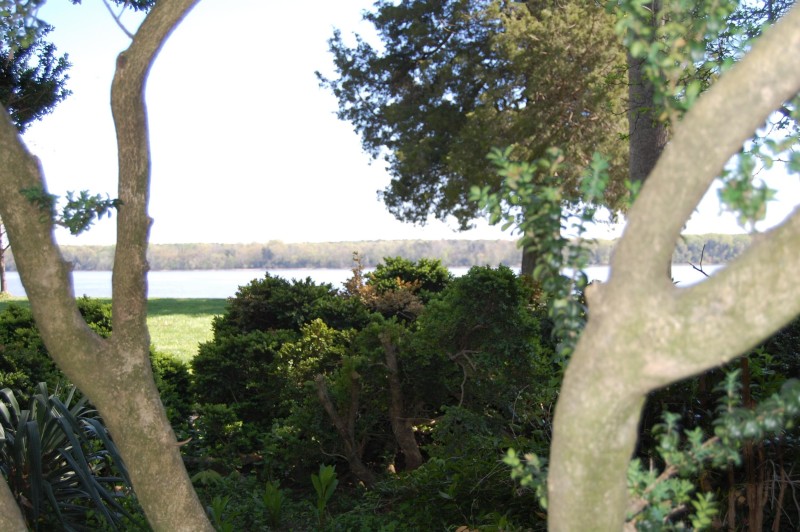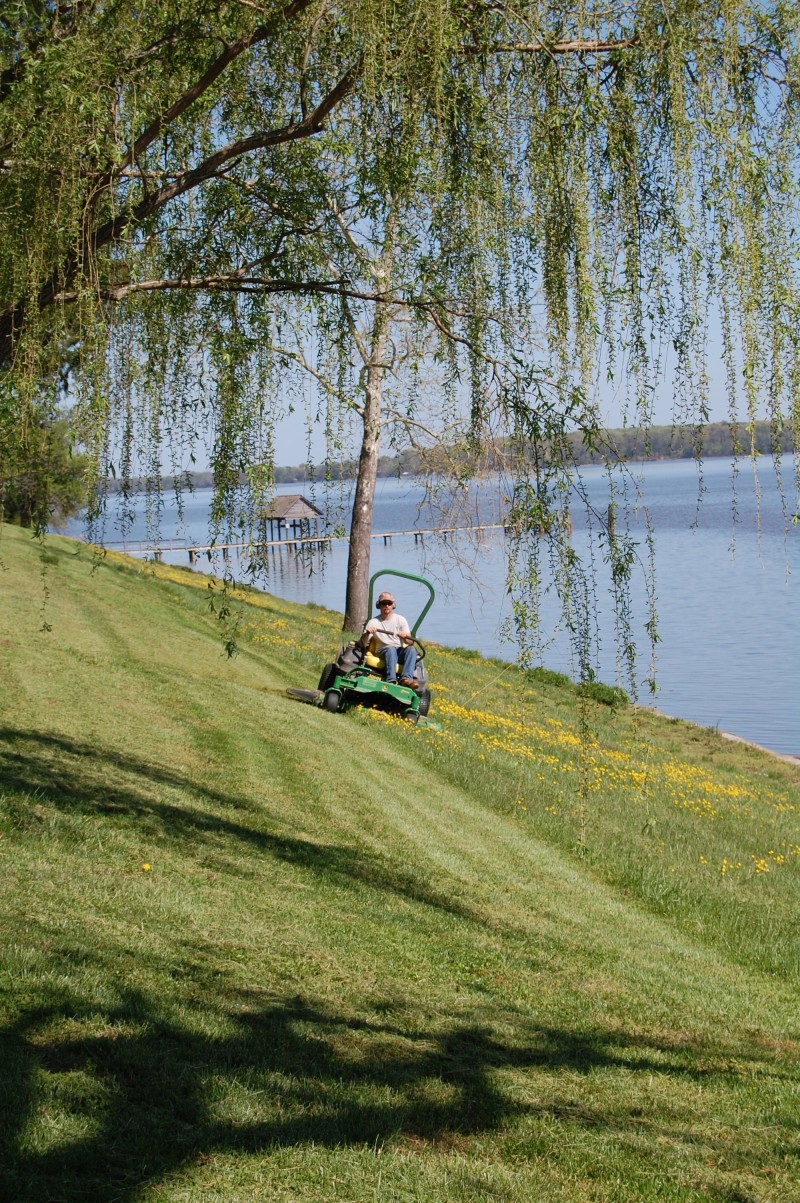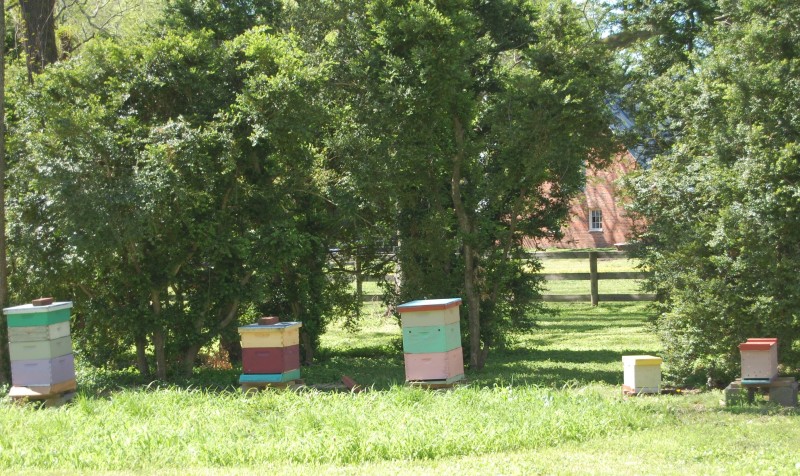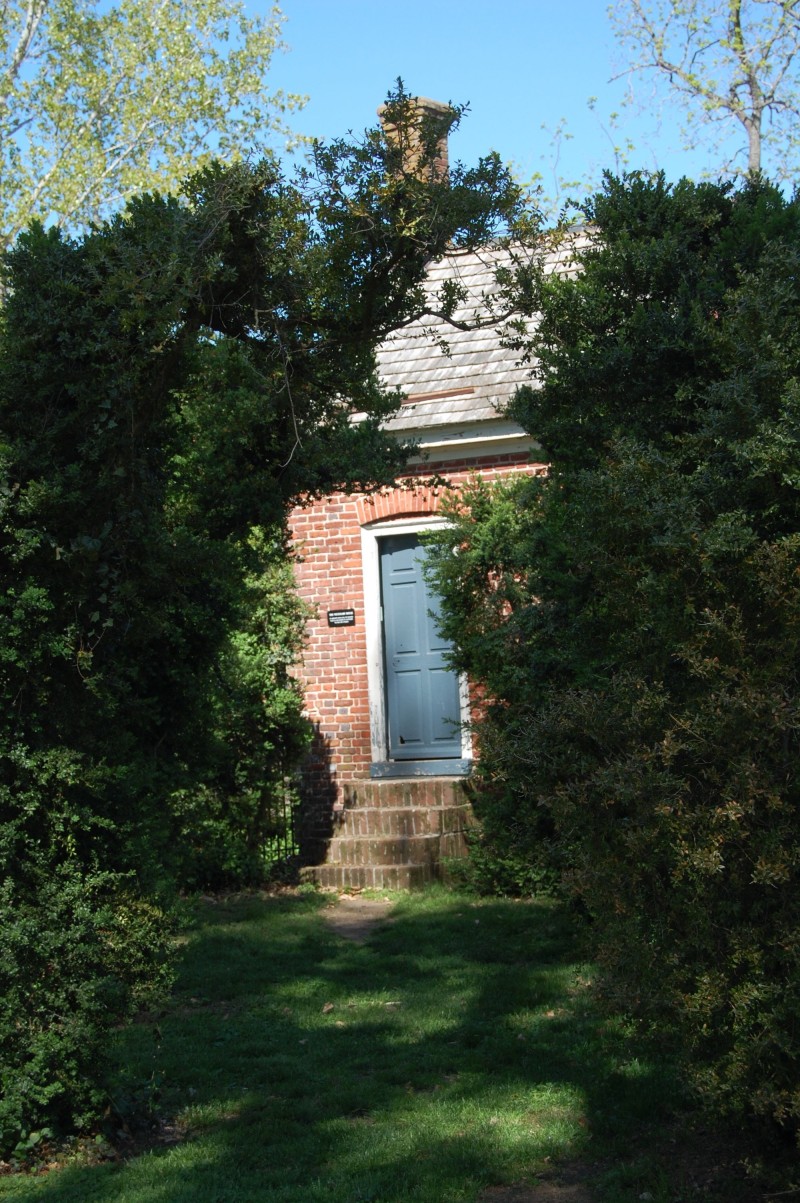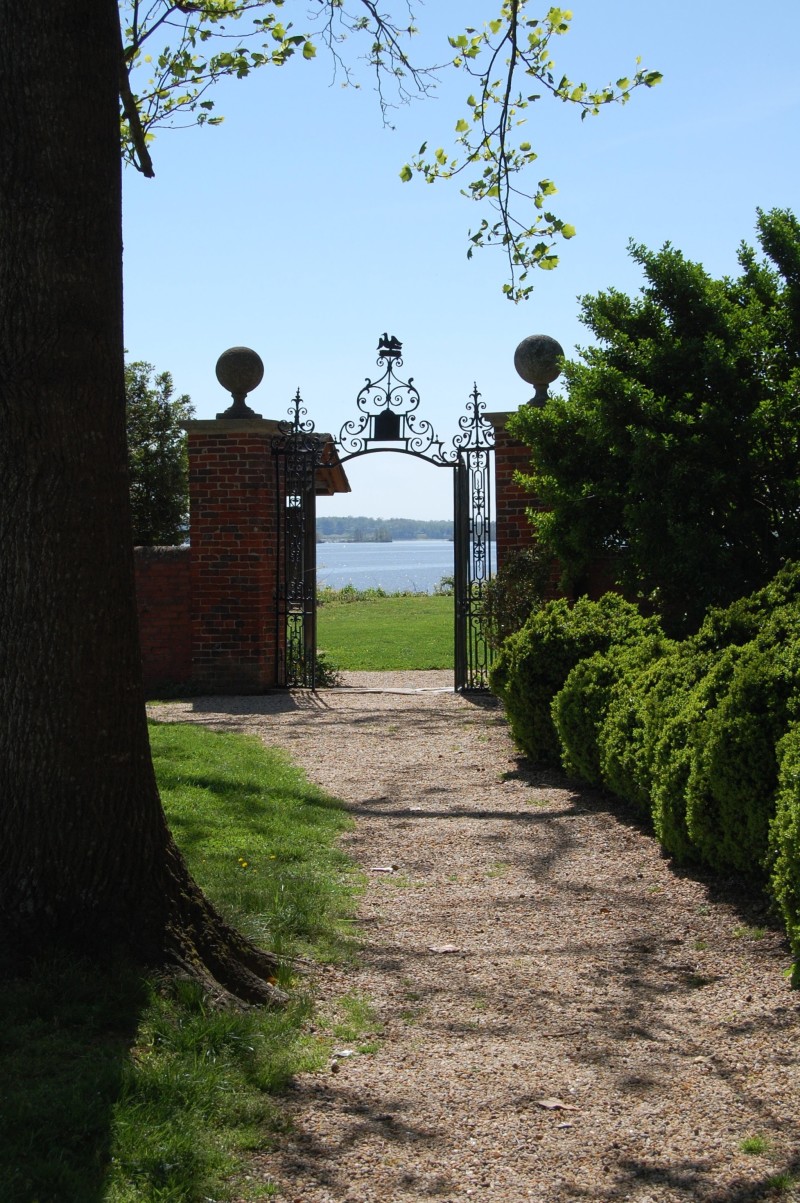For those restless gardeners who, like me, are checking their gardens daily for signs of life, grab your pruners and head outside, because it’s time to:

Magnolia denudata (Butterfly Magnolia)
Cut back Liriope with the lawn mower or string trimmer.
Cut back to the ground any Lenten Rose (Helleborus orientalist) or Christmas Rose (Helleborus niger) leaves that are browning or leathery. Most old leaves announce themselves by collapsing flat on the ground — just as we do at the end of the day!
New growth and flowers should already be emerging.

Helleborus niger (Christmas Rose)
Prune to about 2 inches high all perennials not cut back in fall.
Exceptions: cut back Perovskia atriplicifolia (Russian Sage) to about 6 inches, cut back Salvia microphylla/greggii (very similar, often confused) to about 4 inches. These are both woody perennials.

A perennial bed at Cheekwood Garden in Nashville
DO NOT cut back Tree Peonies! They bloom on old growth.
Remove dead and discolored Stachys byzantina foliage (Lamb’s Ears).
Prune ornamental grasses all the way back.
Don’t prune before early March, since the winter color and movement are two of their best features.
Exception: Try raking, rather than pruning, Muhly Grass (Muhlenbergia capillaris), for thicker new growth.

Ornamental grasses along the High Line in New York City
Prune dying leaves of evergreen ferns (many of the fronds still look great — I can’t usually bring myself to cut these just yet).

Dryopteris erythrosora (Autumn Fern) fiddlers emerge alongside Digitalis grandiflora (Foxglove)
HYDRANGEAS
Prune Annabelle Hydrangeas (Hydrangea arborescens), if you did not do so in the fall. by cutting back all branches to 6-12 inches high.
Unlike the Mophead Hydrangeas, Annabelles bloom on new wood.

Hydrangea arborescens ‘Annabelle’
You can still prune the everblooming Hydrangeas, as they bloom on new and old wood (you will be cutting out some of the flowering buds that have set on the old wood).
You can also prune Hydrangea paniculata now (includes Pee Gee, Limelight, Tardiva cultivars).
LIMELIGHT: If you want a full, bushy plant, cut back Limelights to about 2 or 3 feet every spring. Also prune all the little spindly branchlets. If you are training your Limelight into a tree, then merely thin the weaker branches.

Hydrangea paniculata ‘Limelight’
TARDIVA: Tardiva has a much nicer growth habit than Limelight and Pee Gee. It naturally grows into a tapering multi-branched small tree. To maintain the multi-branch form, just deadhead last year’s flower heads and any small spindly branches that detract from the form you are trying to attain.

Hydrangea paniculata ‘Tardiva’
You may snap off last year’s flower heads of old-fashioned Mopheads, Lacecaps and Oak Leaf Hydrangeas, and you may cut out the oldest unproductive branches, but do not give these Hydrangeas an overall haircut right now. They bloom on old wood.
Work aluminum sulphate into the soil in which blue Hydrangea are growing, to make the blooms bluer. Add lime to make the blooms pinker.
OTHER SHRUBS AND TREES
Prune Buddleia davidii (Butterfly Bush) to about 2 feet and remove spindly and dead branches, if you want a full bushy plant. If you want a Butterfly Bush that resembles a small multi-trunk tree, only cut out straggly branches. Prune the dwarf Buddleias to about 2 feet wide and one foot tall.
Cut back Caryopteris x clandonensis (Bluebeard) to about 18 inches.

Caryopteris x clandonensis ‘Longwood Blue’
Prune Callicarpa (Beautyberry) to about 6 inches.

Callicarpa americana (American Beautyberry) growing wild at Jamestown
Prune Sasanqua Camellias (fall and early winter blooming Camellias) now, only if needed to shape or reduce size.
“Pinch” or hand prune Boxwood to thin and open up the plant. This allows light and air inside so that the plant can produce leaves along the interior surfaces. This is especially important to protect the Boxwood from Boxwood Blight. The Virginia Coopertative Extension Service, North Carolina State University and Saunders Brothers Nursery are good resources for keeping up with the latest on the blight. If planting Boxwood, be sure to ask your landscaper or the nursery whether the Boxwood come from a nursery that adheres to the Boxwood Blight Cleanliness Program.
If your Poet’s Laurel (Danae racemosa) has not been pruned in a few years, cut it back to the ground. Poet’s Laurel produces new growth from the earth, not from other branches. You can continue to do the full cut back (the Frank Cut) every spring; you can do the Frank cut every 2 or 3 springs; or you can just cut out the oldest third of growth every spring.
DO NOT prune any spring-flowering shrubs or trees until after they bloom! Exception: Dead or diseased branches can always be removed.

Camellia Japonica blooms in late winter or spring, depending on the cultivar. It should not be pruned until after it finishes blooming.
Prune Vitex agnus-castus (Chastetree) by cutting suckers back to the ground or back to the intersection with a larger branch. Remove some large branches to provide a nice, open shape to the small tree/shrub. You can also cut Vitex way back, if it has gotten out of control.

Vitex agnus-castus (Chastetree)
DO NOT COMMIT CRAPE MAIMING!!!!!!!!!!!!!!!!!!!!!!! Topping Crape Myrtles does nothing except disfigure the tree. Feel free to thin Crapes now, by cutting out weaker branches and sprouts. See my earlier post for more information on proper Crapemyrtle pruning.
ROSES
Prune Shrub Roses to about 12 to 18 inches. Make cuts about a quarter of an inch above an outward facing bud. Also remove any branches with diameter less than a pencil, and any diseased or dead branches.
Prune Climbing Roses. Cut out all dead and diseased canes, any crossing or spindly canes and some of the oldest (increasingly less productive) canes. Tie the branches to your support.

‘White Dawn’ Climbing Rose
Begin feeding roses every six weeks throughout the growing season. While I generally avoid fertilizing plants unless they are showing signs of deficiency, roses are an exception because they are gluttonous feeders.
OTHER CHORES
Work compost into the soil to keep it healthy and provide a source of nutrition for the plants.

Paeonia lactifolia (Herbaceous Peony) in bud
Apply mulch ONLY if needed. When you do mulch, consider mulching with half or all compost or a layer of shredded leaves and another inch of finely ground mulch. If the mulch applied earlier has not broken down, do not apply more. Sometimes, overzealous mulching leads to an impenetrable mat that traps moisture, thus inviting disease. Rake loose the existing mulch to allow air and rain through to the soil. Also, be sure not to lay the new mulch too thick — especially in perennial beds.
PLEASE DO NOT volcano mulch around trees! Volcano mulch is the term used to describe mulch piled up in a big mound around a tree. When mulch rests against a tree trunk, it traps moisture, softening the trunk and inviting pests and disease. Over time, the tree will decline and die. Richmond Tree Stewards recommend the 3x3x3 rule: no more than 3 inches of mulch, in a 3 foot wide circle, stopping 3 inches from the trunk.

Helleborus foetidus (Stinking Hellebore) emerging in late winter
“The opening of the first buds, and the resurrection of plants that looked to be dead, fill the gardener with an enthusiasm that is as perennial as the season.” Elizabeth Lawrence, A Southern Garden
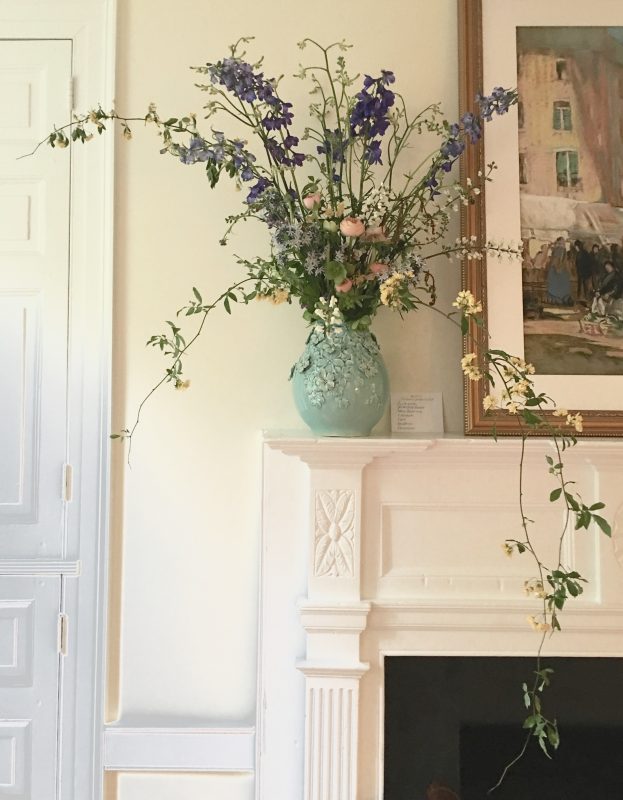
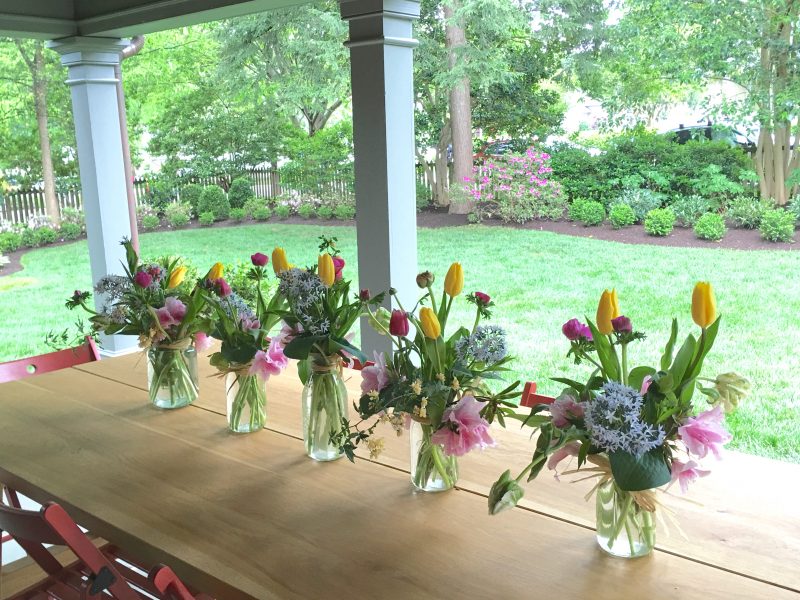
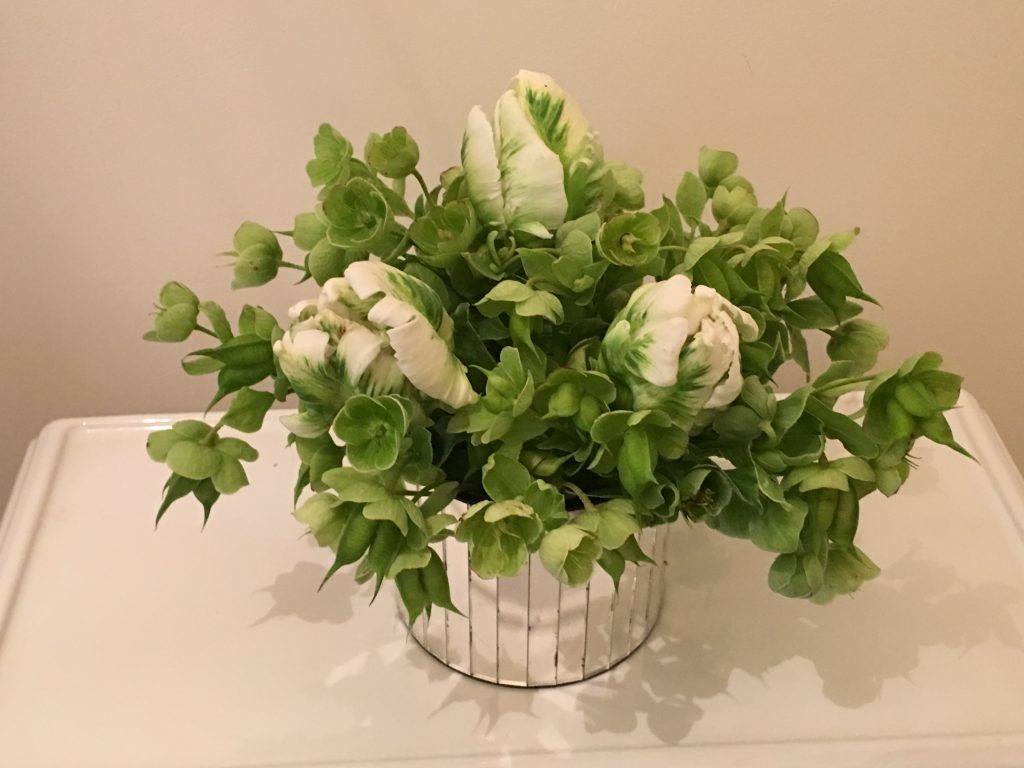
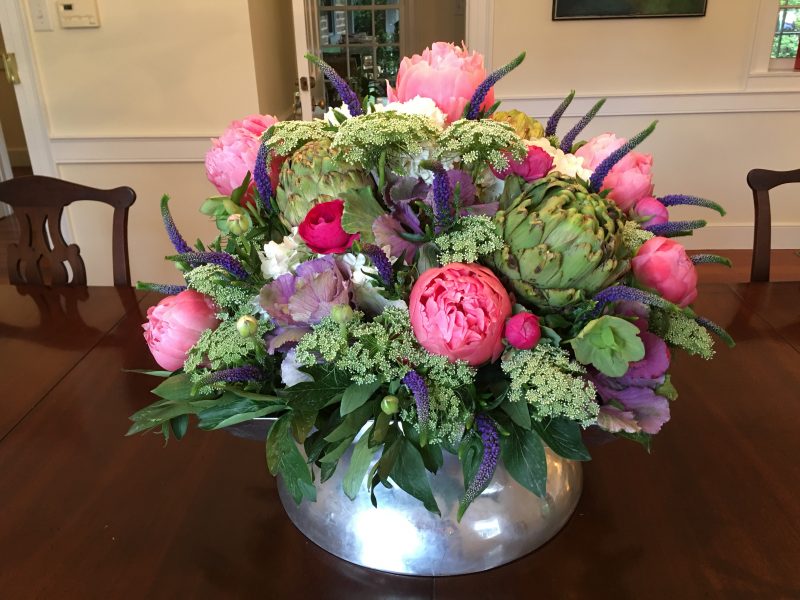
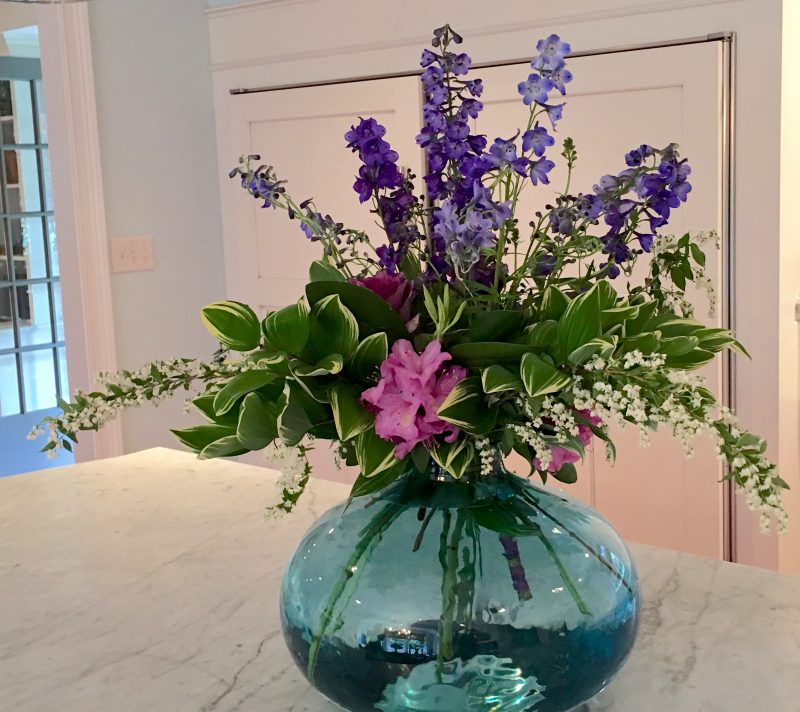
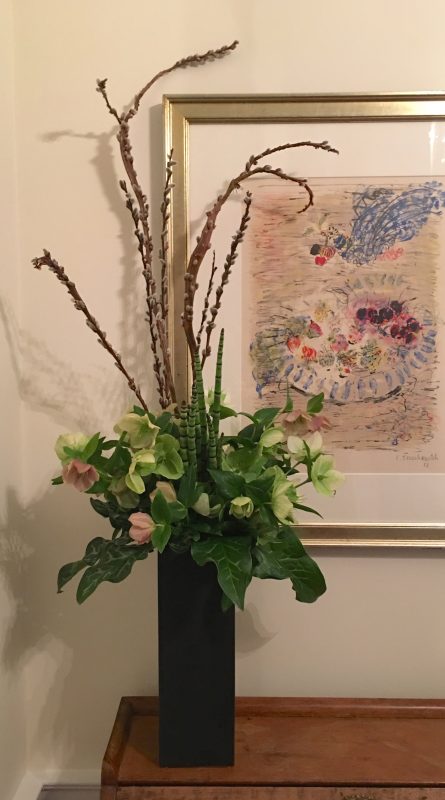
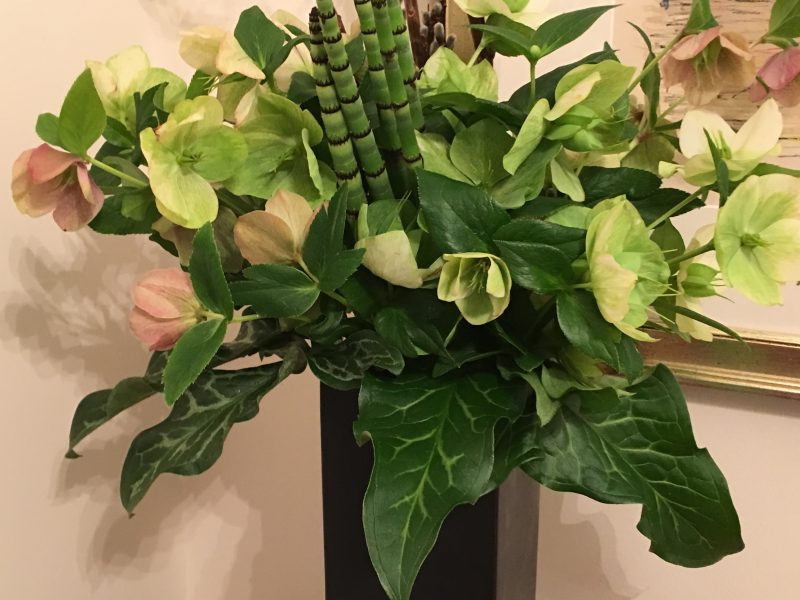
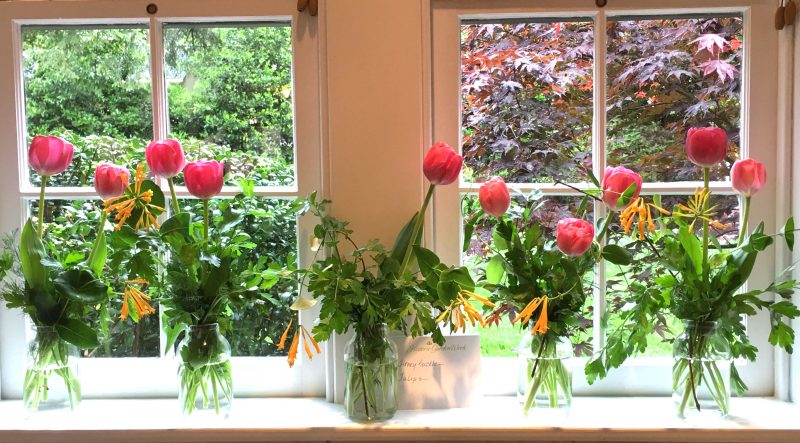
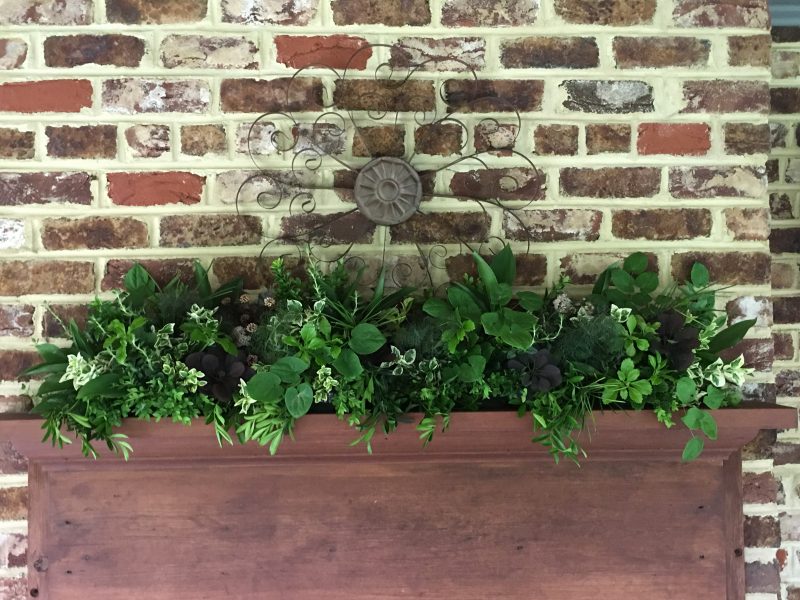

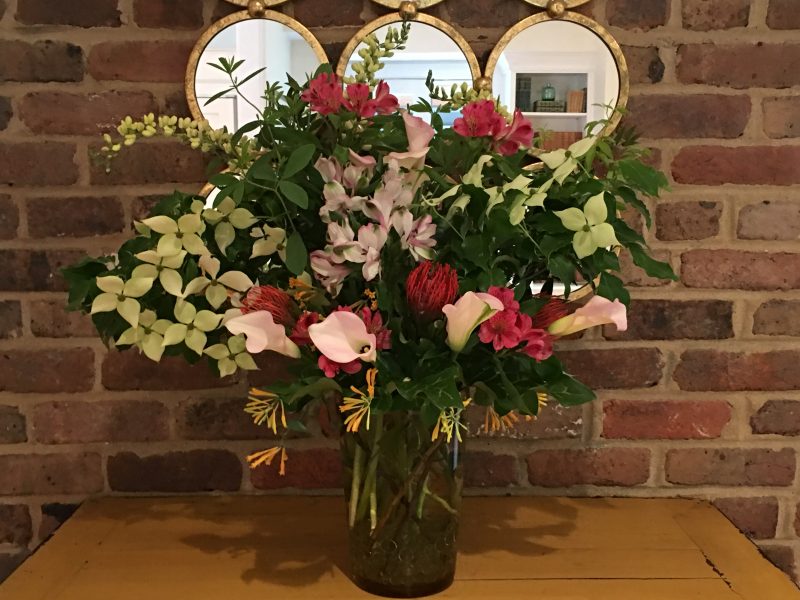
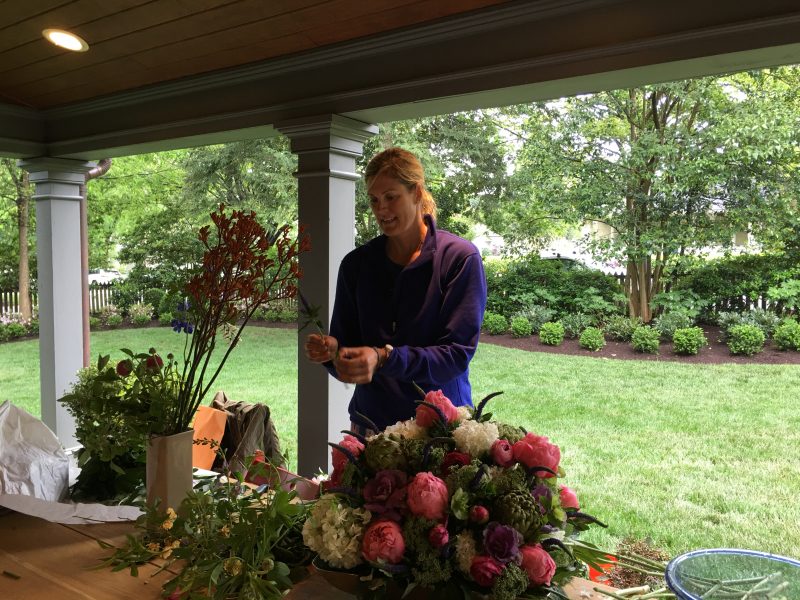
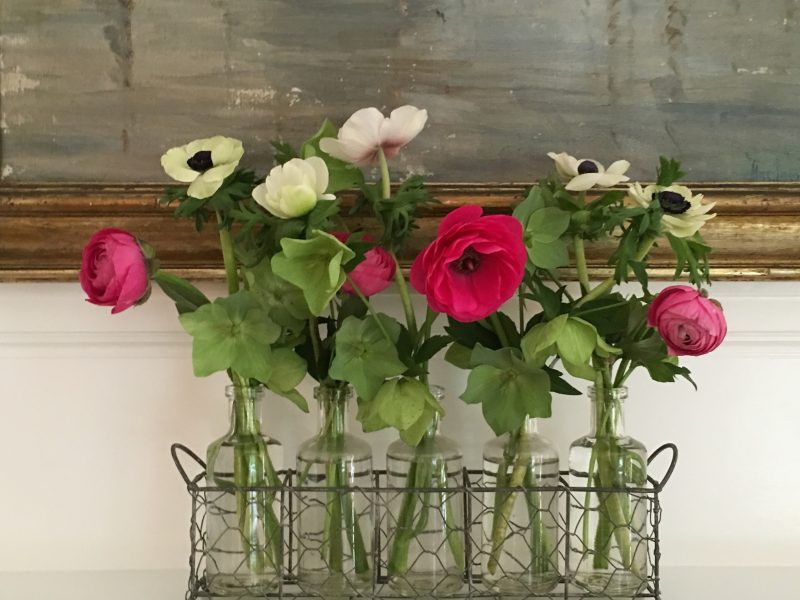
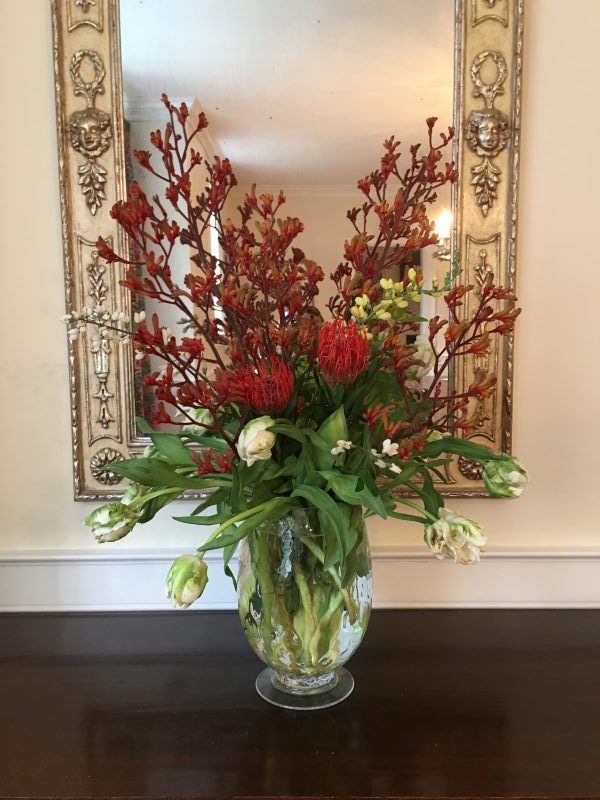
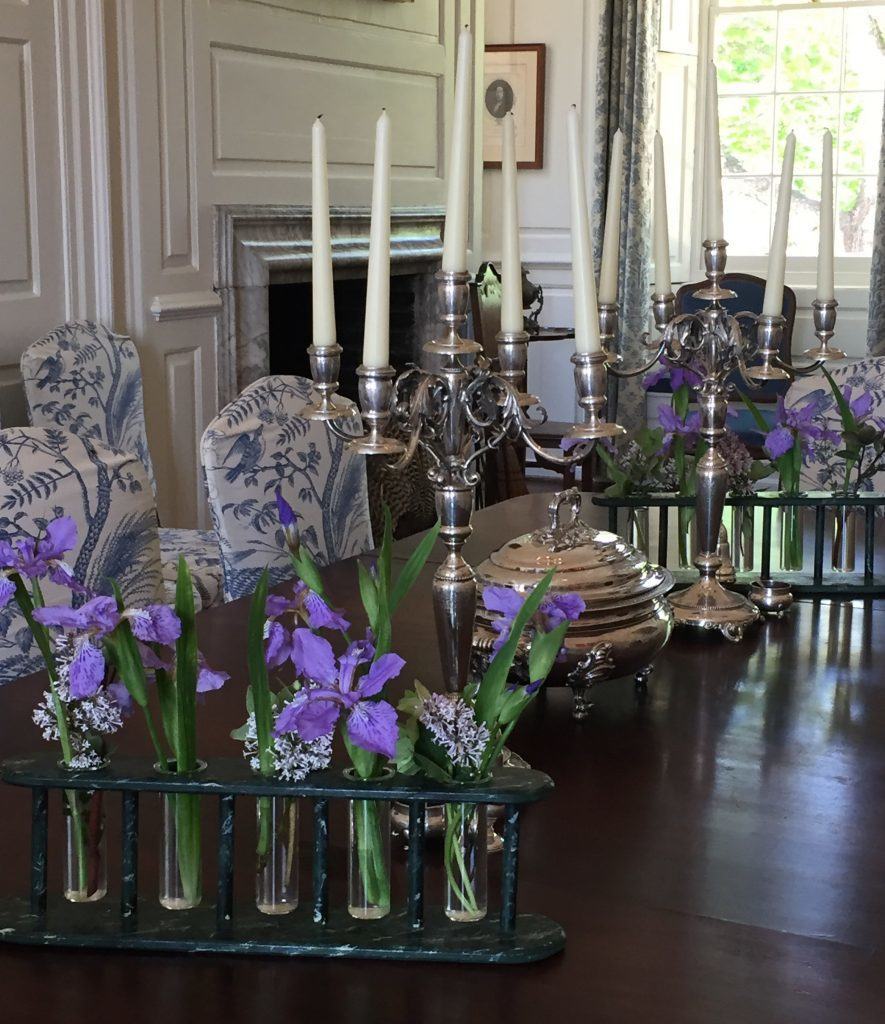
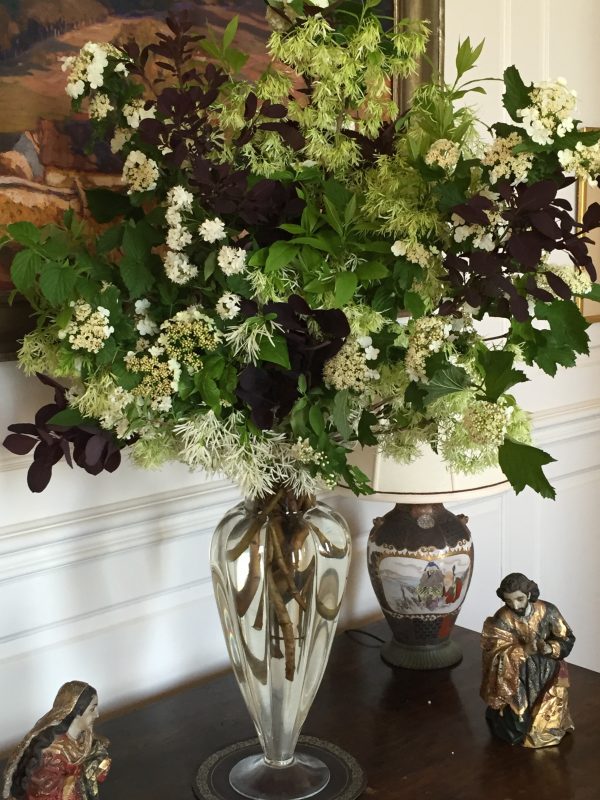
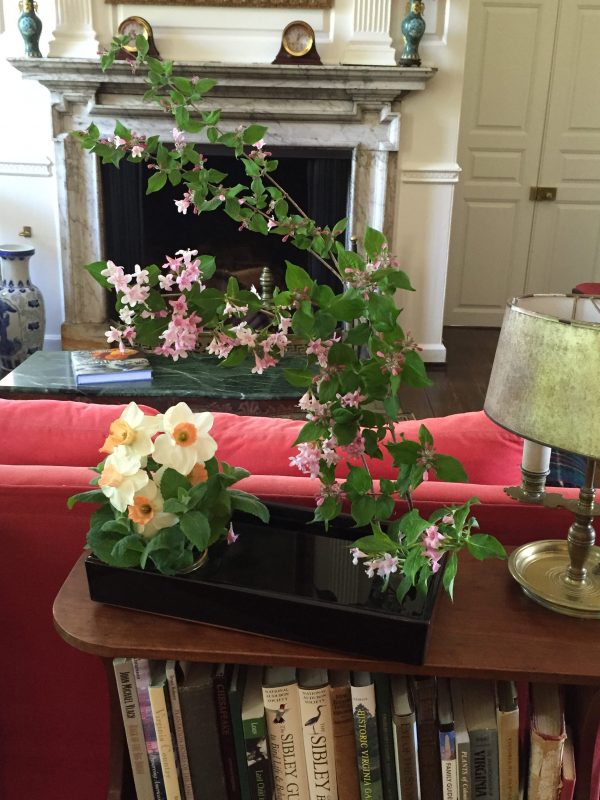


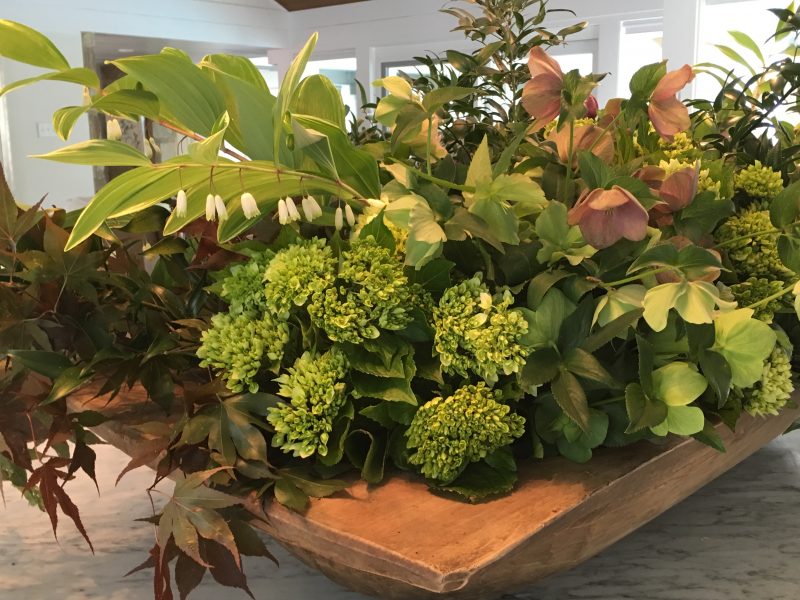
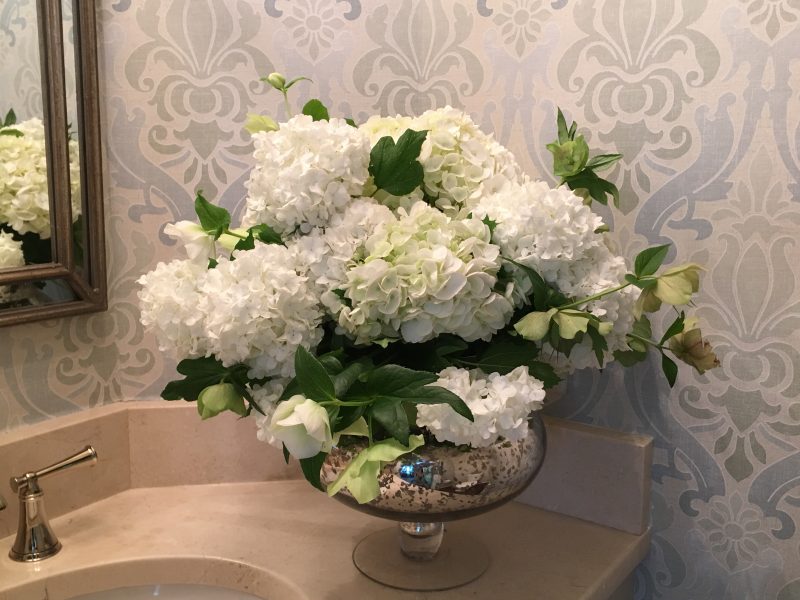
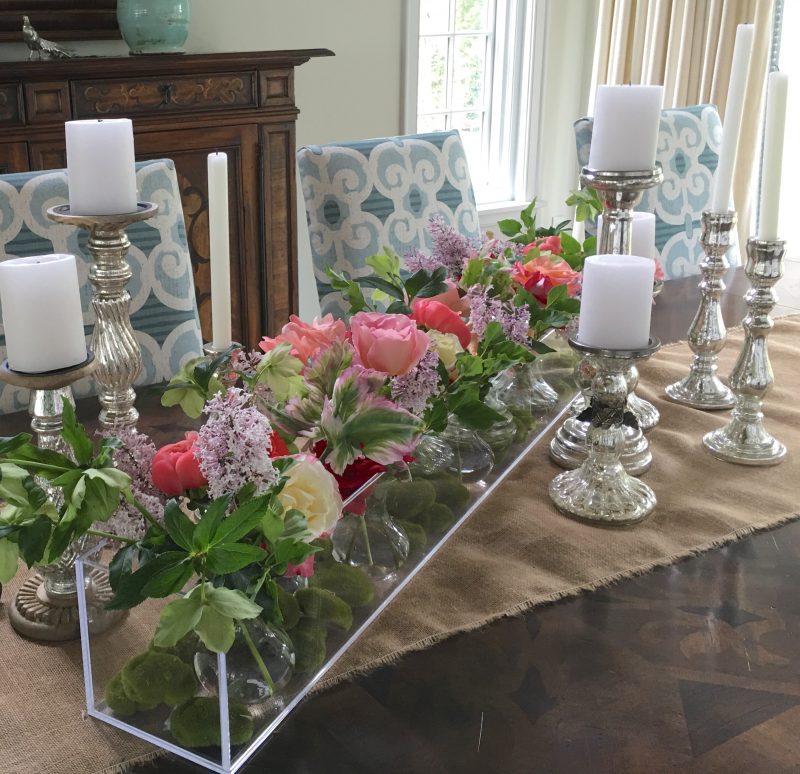
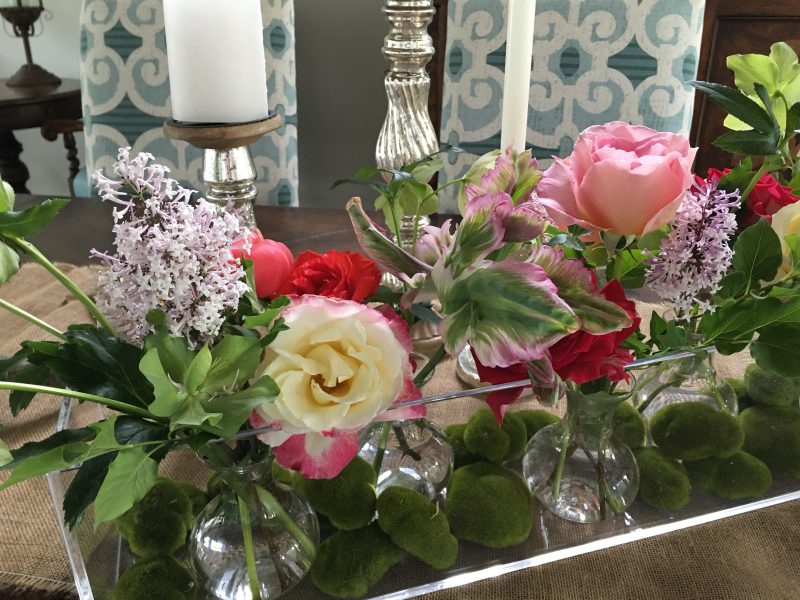
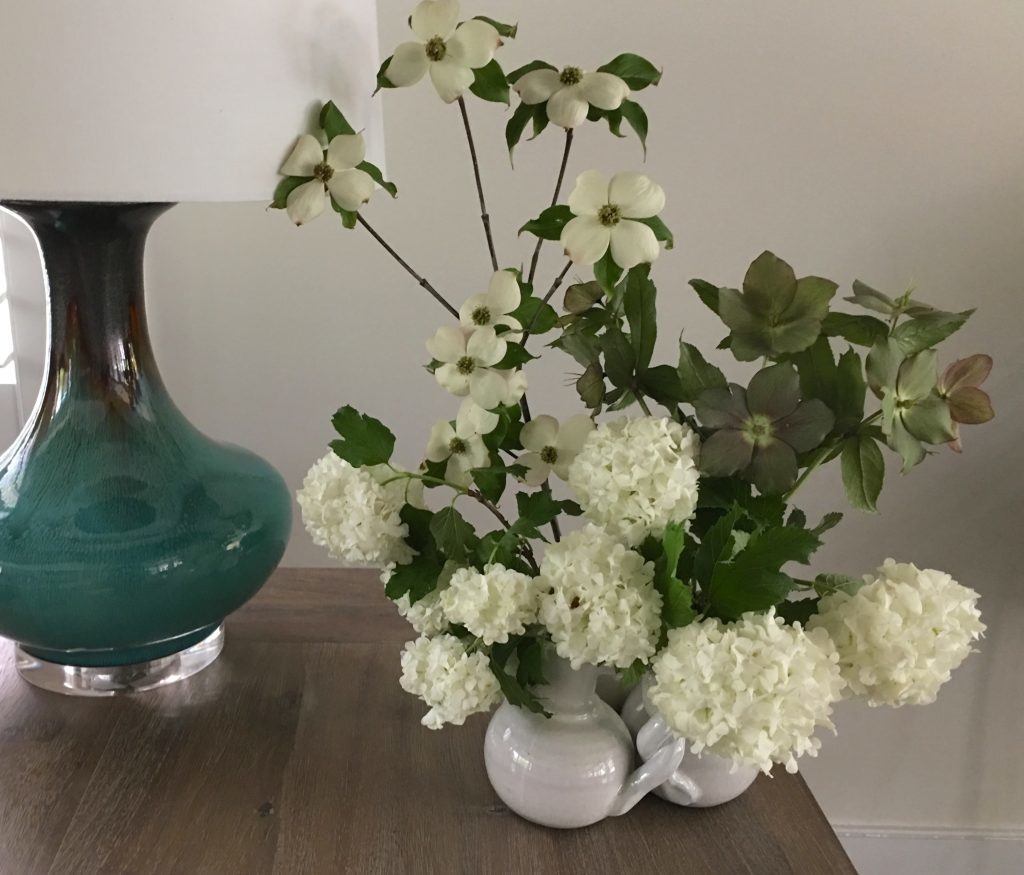
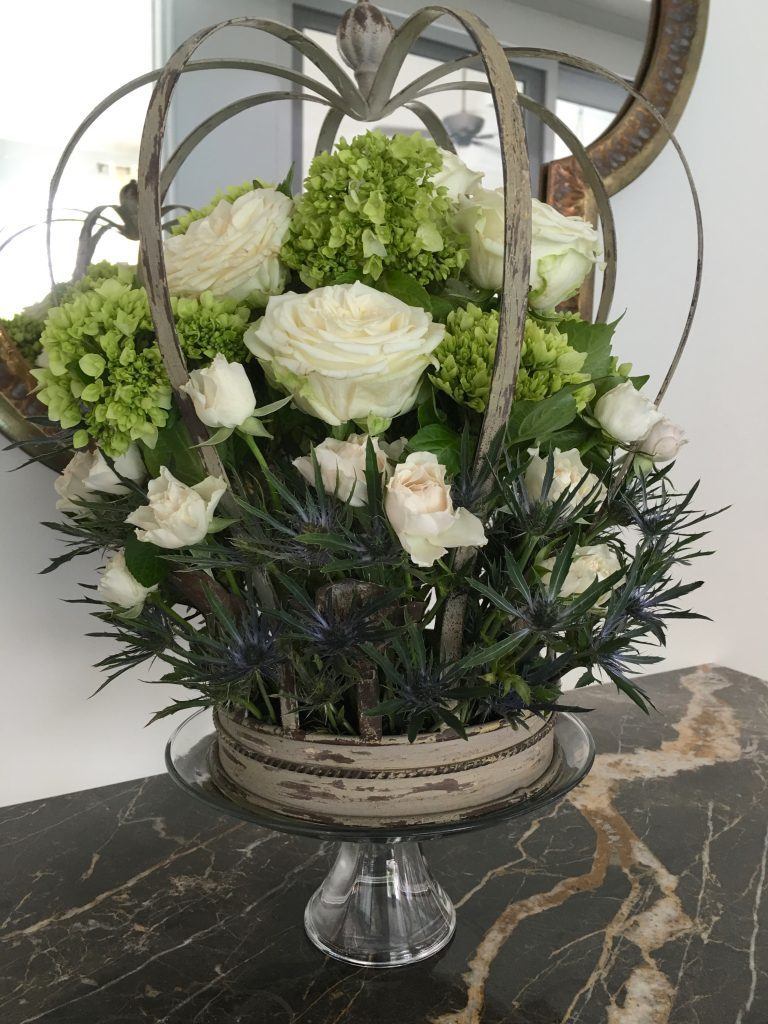



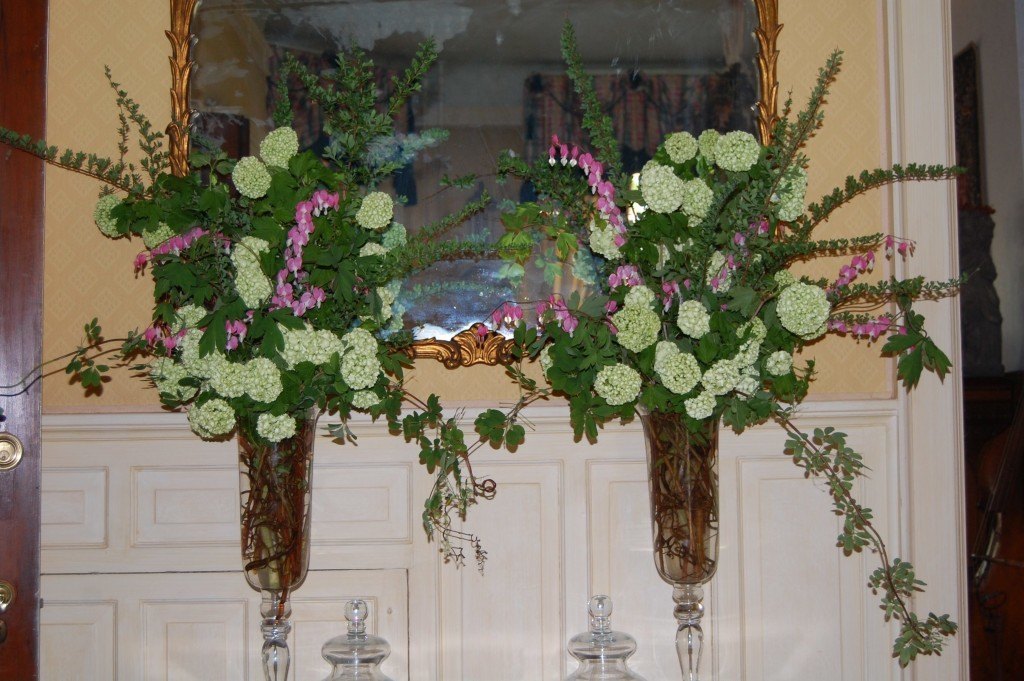
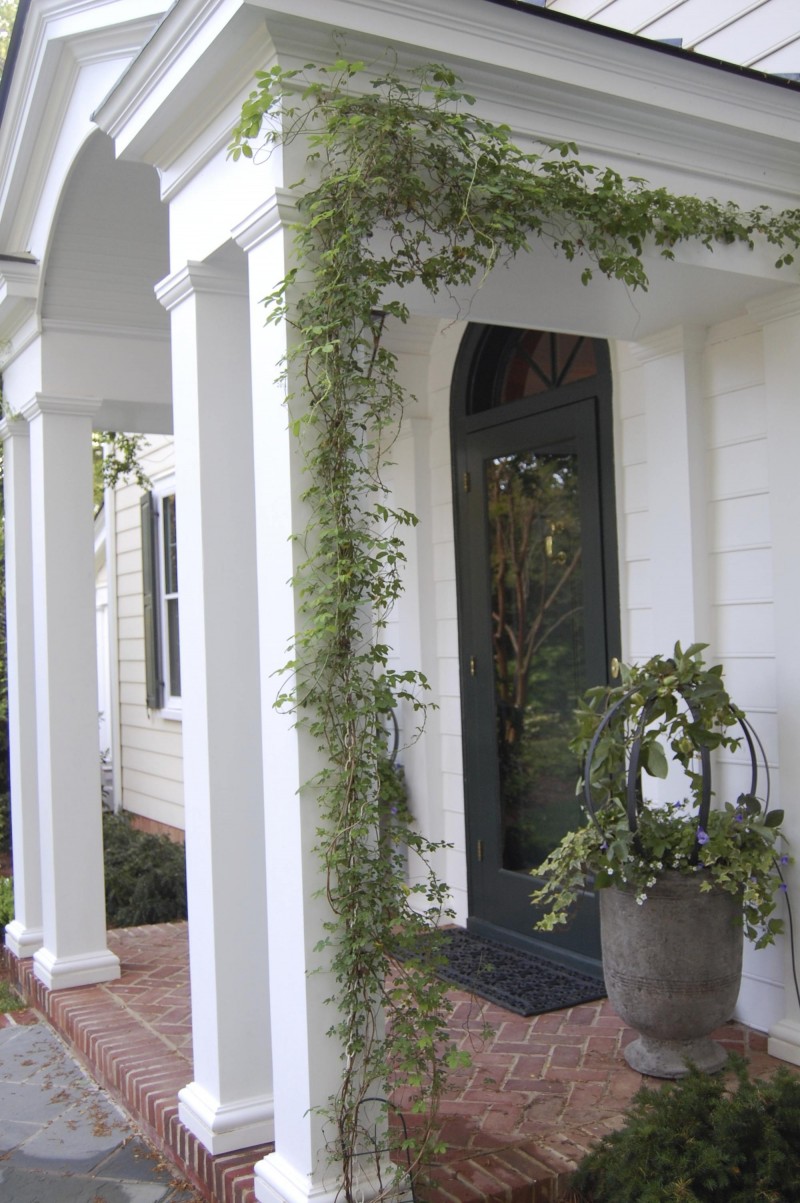
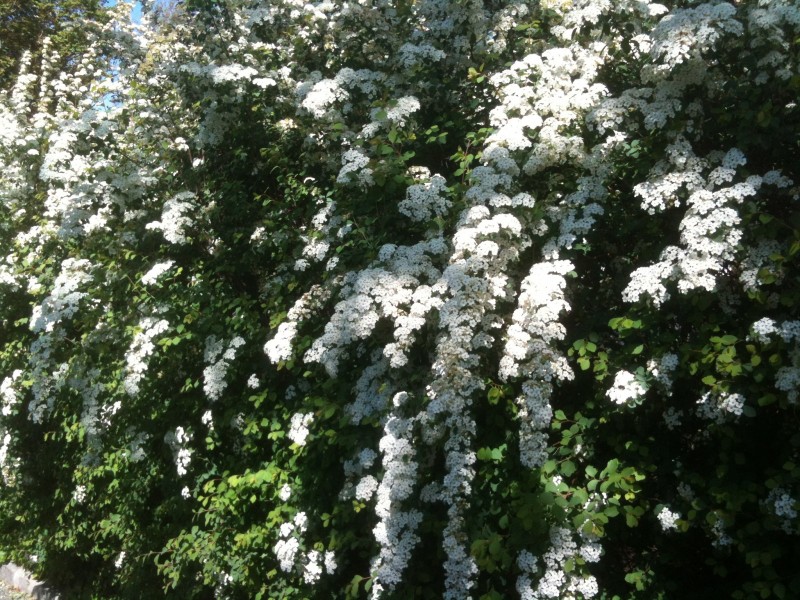
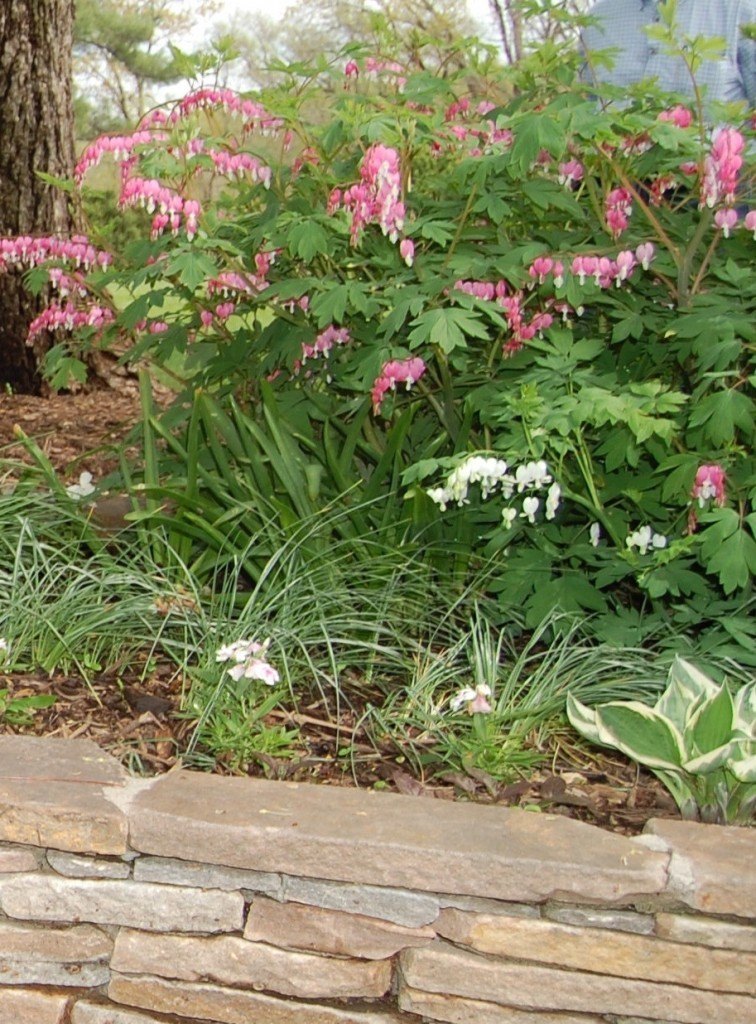
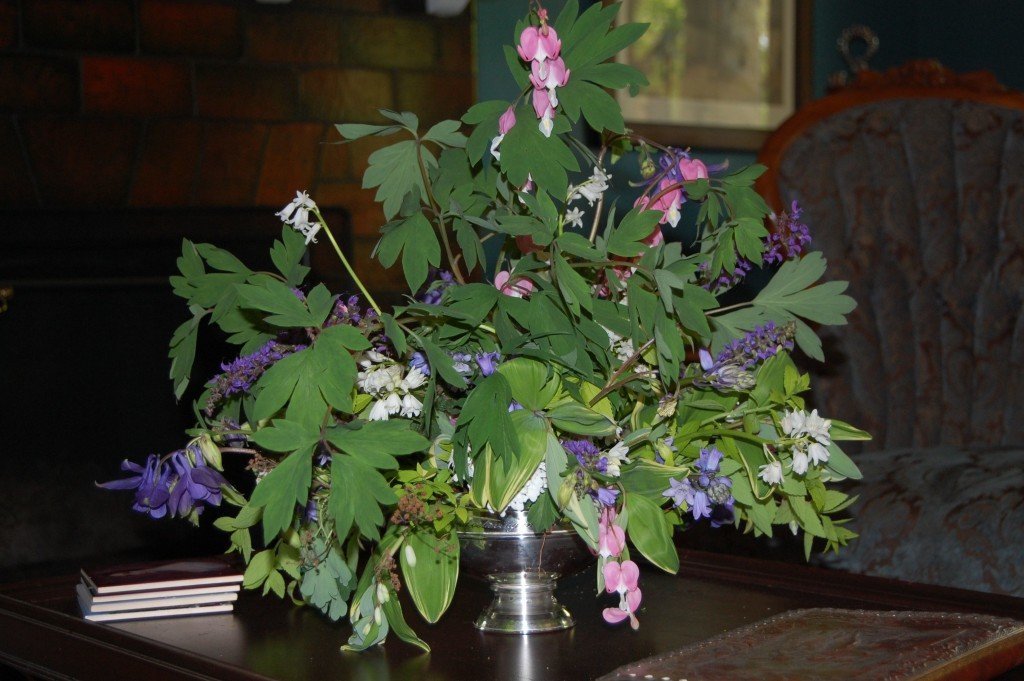
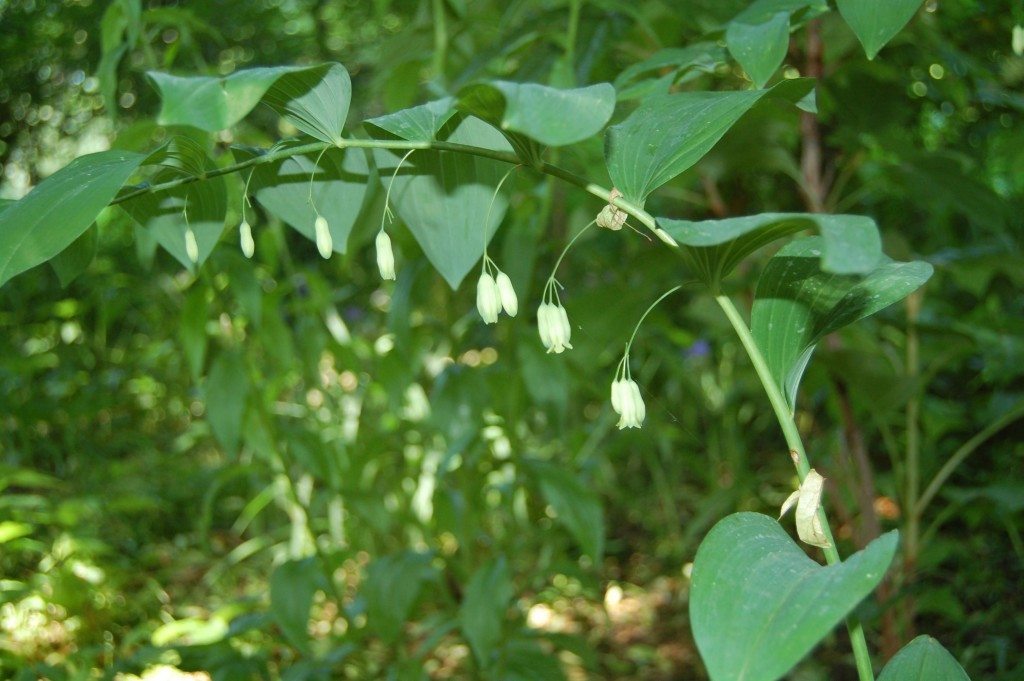
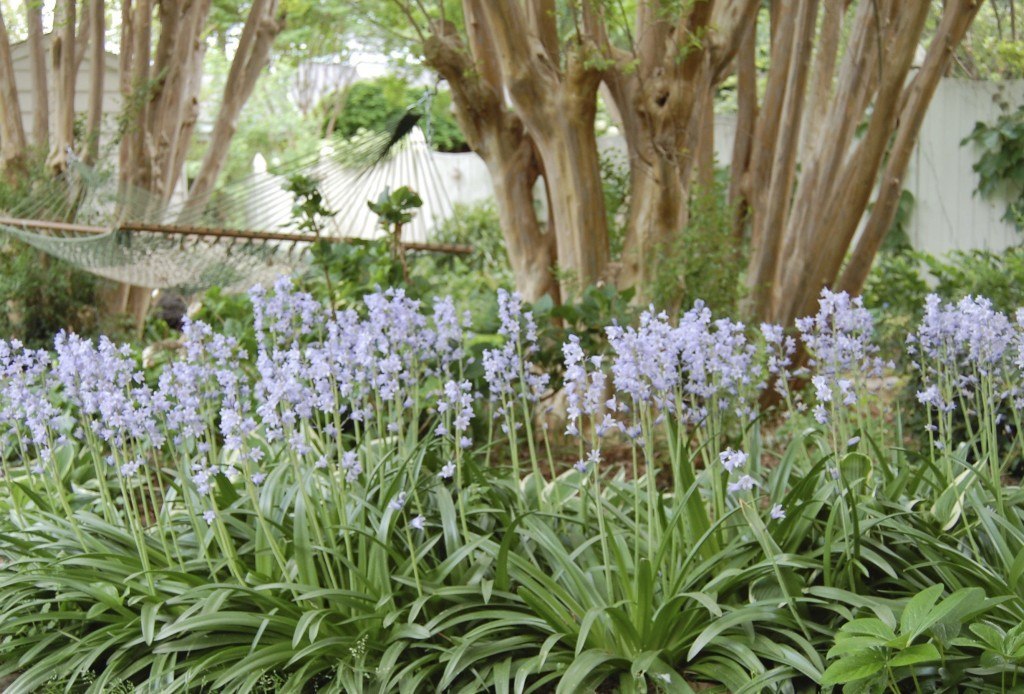
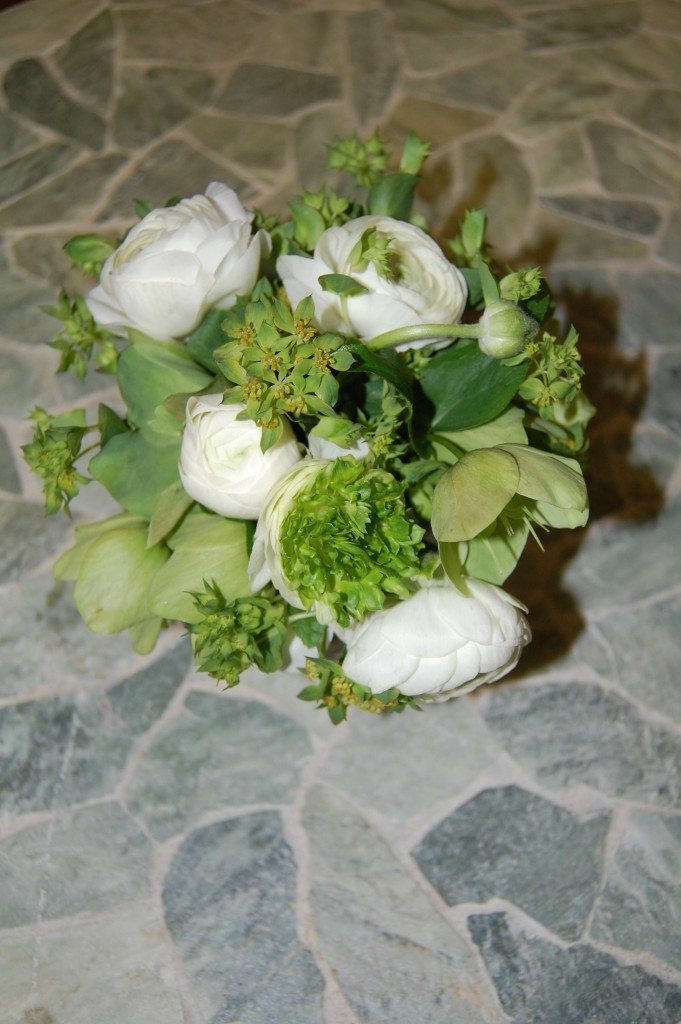
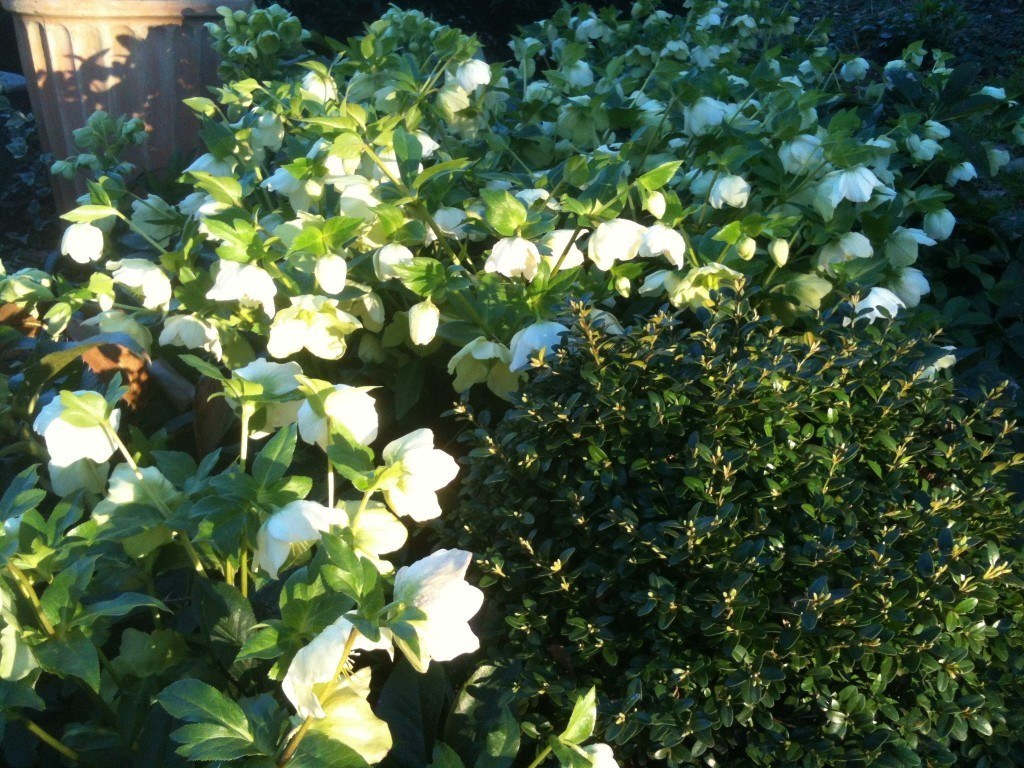
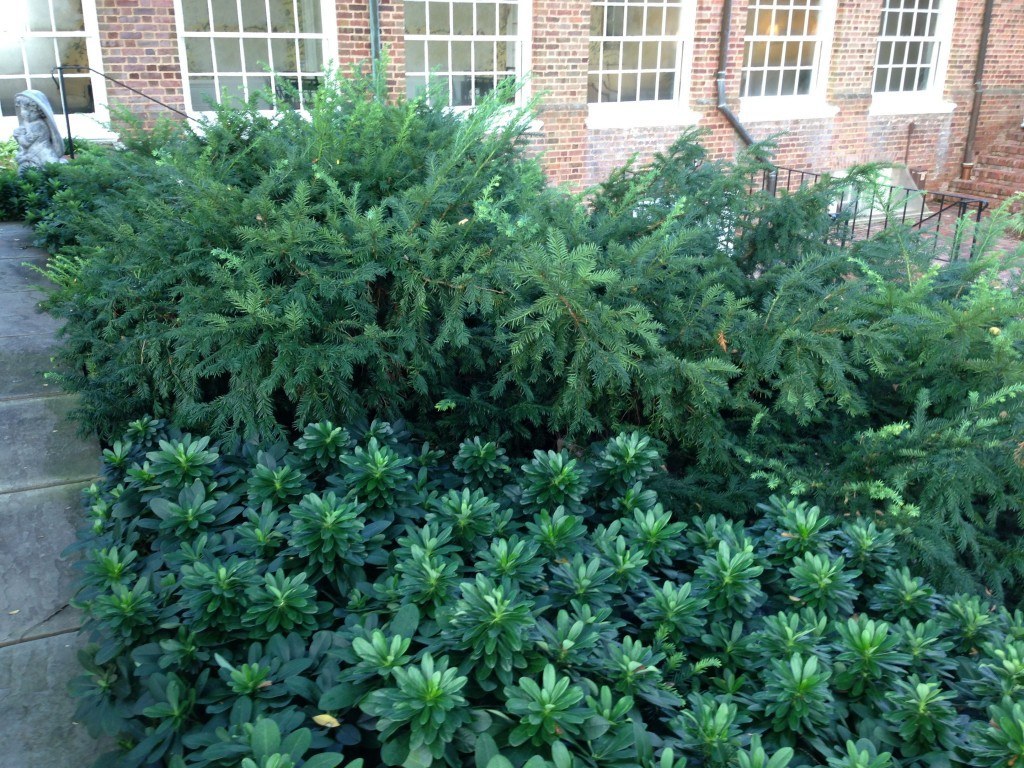
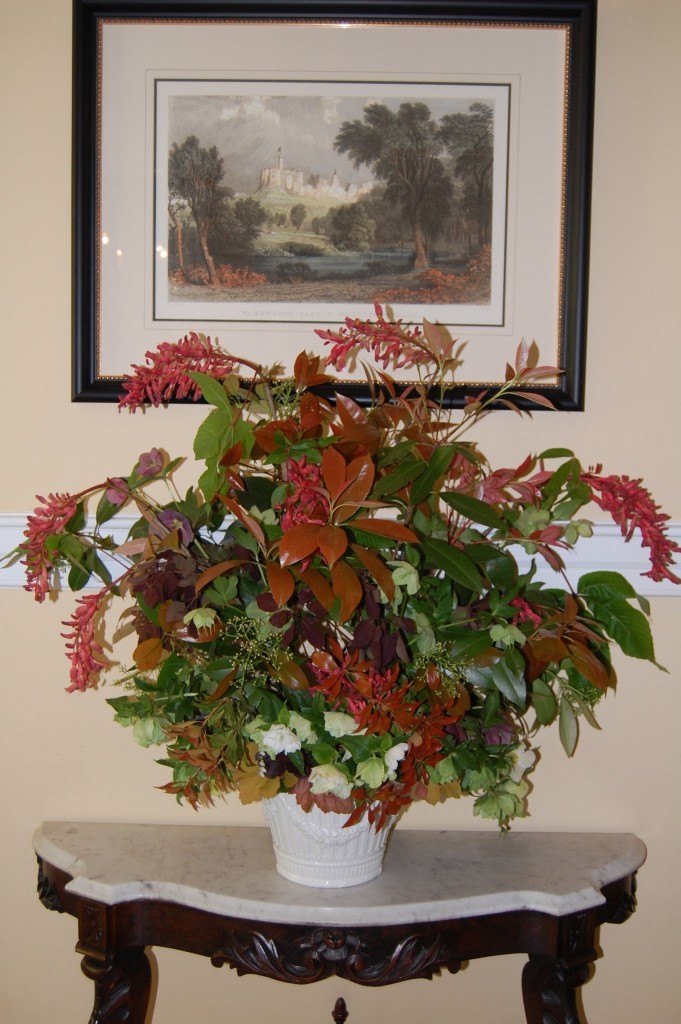
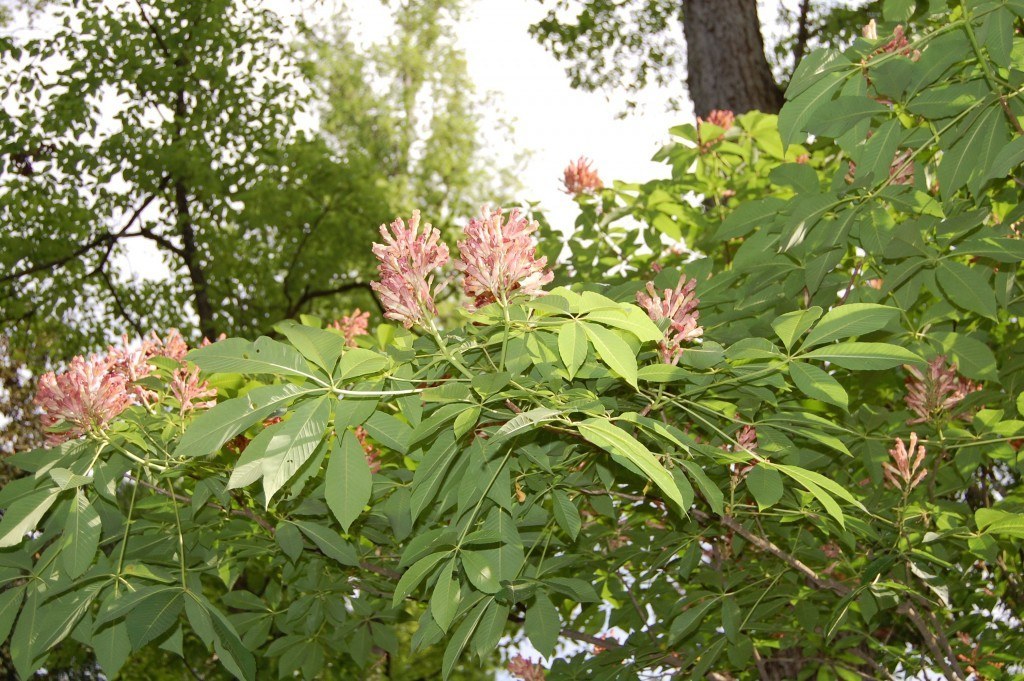
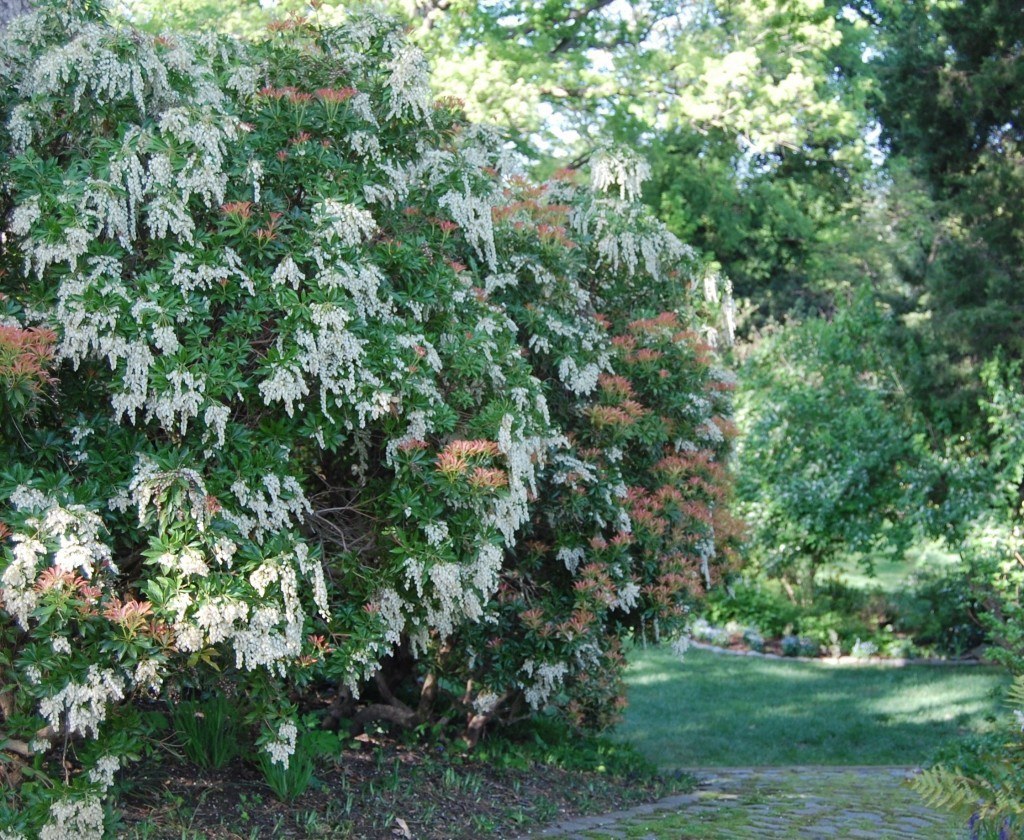
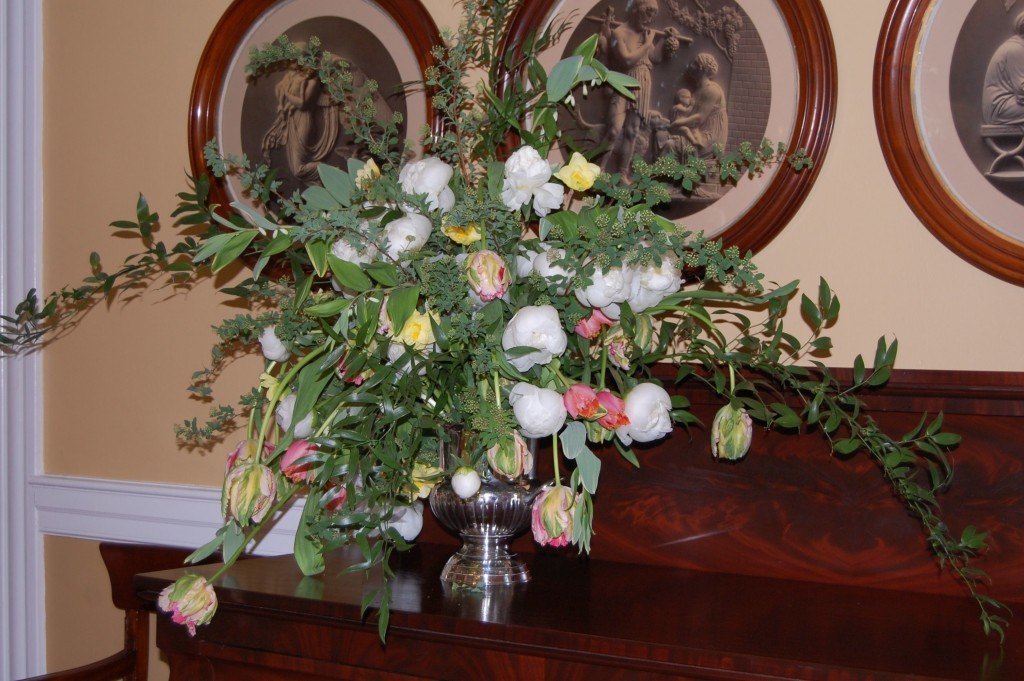 The dramatic arrangement above includes the Spirea and Solomon’s Seal pictured earlier, but the leading ladies here are the Parrot Tulips taking a bow. Poet’s Laurel (Danae racemosa) and Ranunculus anchor the arrangement.
The dramatic arrangement above includes the Spirea and Solomon’s Seal pictured earlier, but the leading ladies here are the Parrot Tulips taking a bow. Poet’s Laurel (Danae racemosa) and Ranunculus anchor the arrangement.
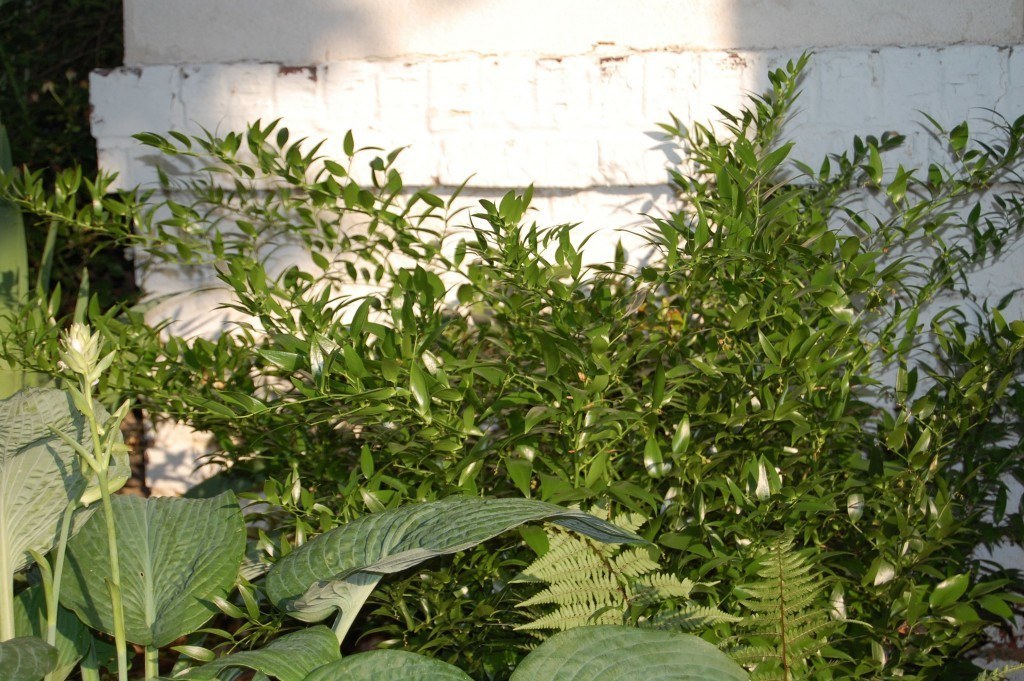
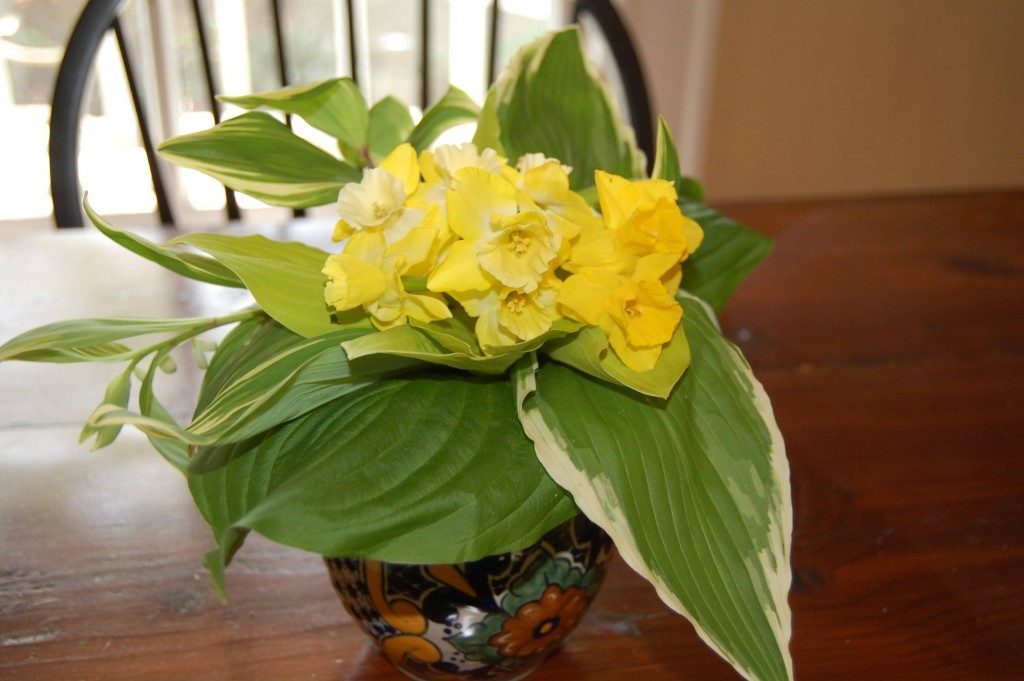
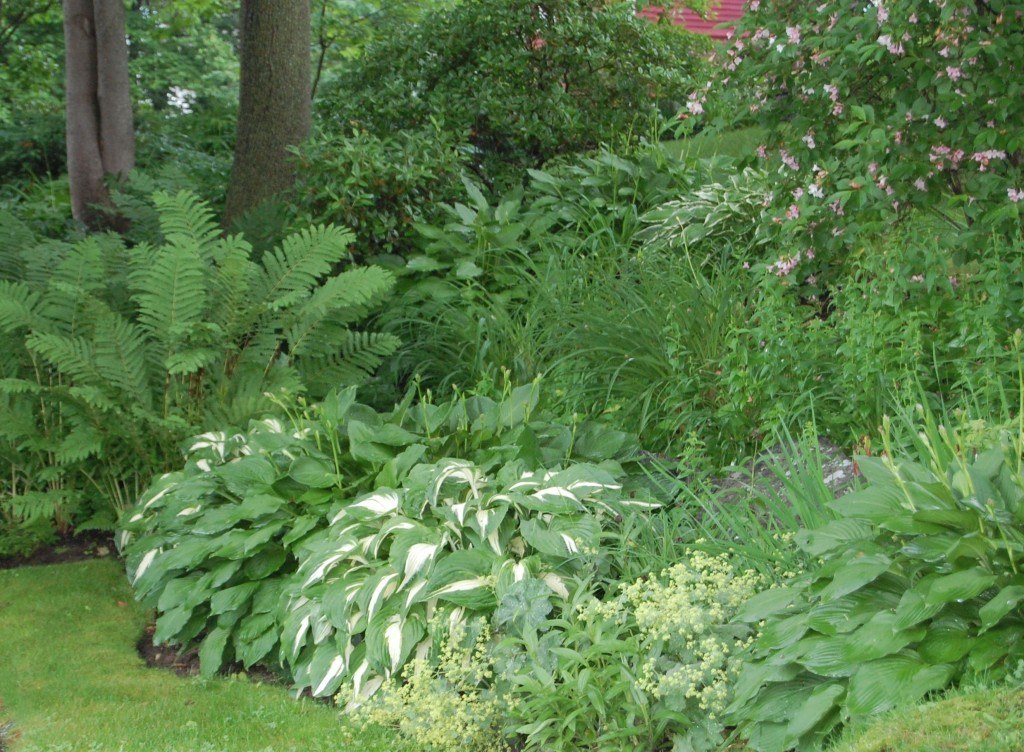
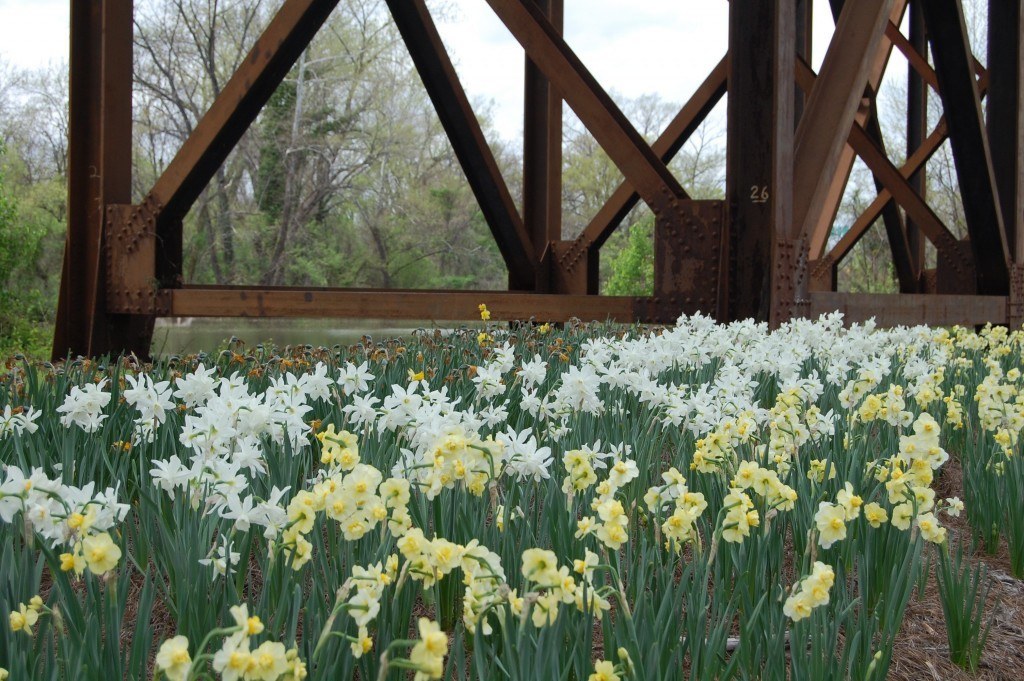
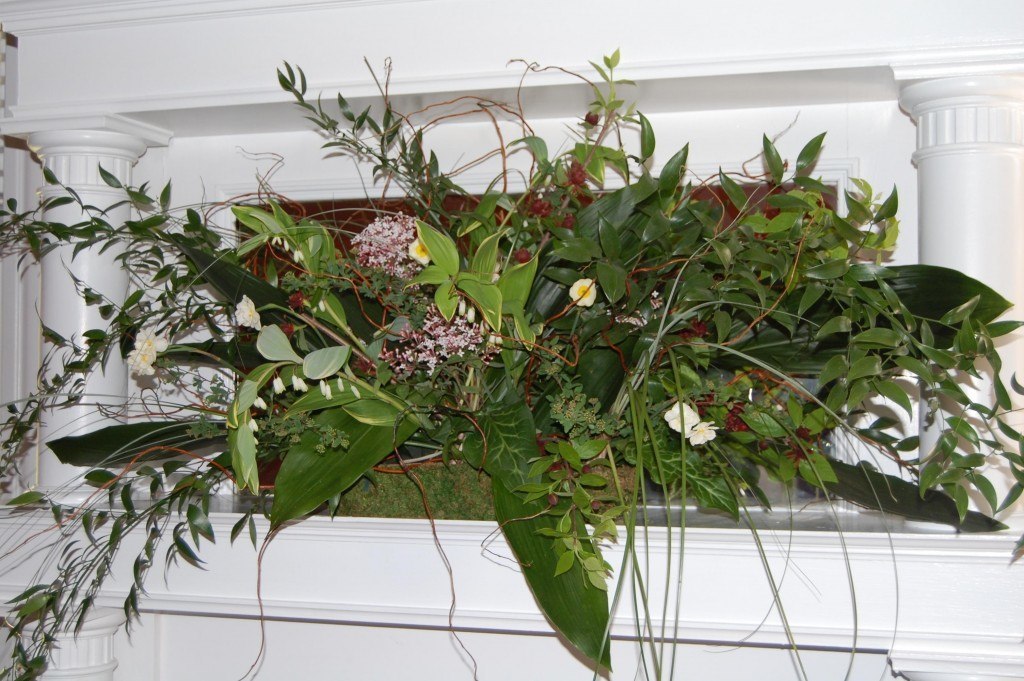 This modern arrangement has an abundance of greenery, including grasses, Poet’s Laurel, Variegated Solomon’s Seal and Arum (Arum italica). Flowers are used sparingly, but to great effect. They include dimuntive daffodil blooms, Lilac (Syringa, genus, I think it is ‘Miss Kim’), and Carolina Allspice (Calycanthus floridus).
This modern arrangement has an abundance of greenery, including grasses, Poet’s Laurel, Variegated Solomon’s Seal and Arum (Arum italica). Flowers are used sparingly, but to great effect. They include dimuntive daffodil blooms, Lilac (Syringa, genus, I think it is ‘Miss Kim’), and Carolina Allspice (Calycanthus floridus).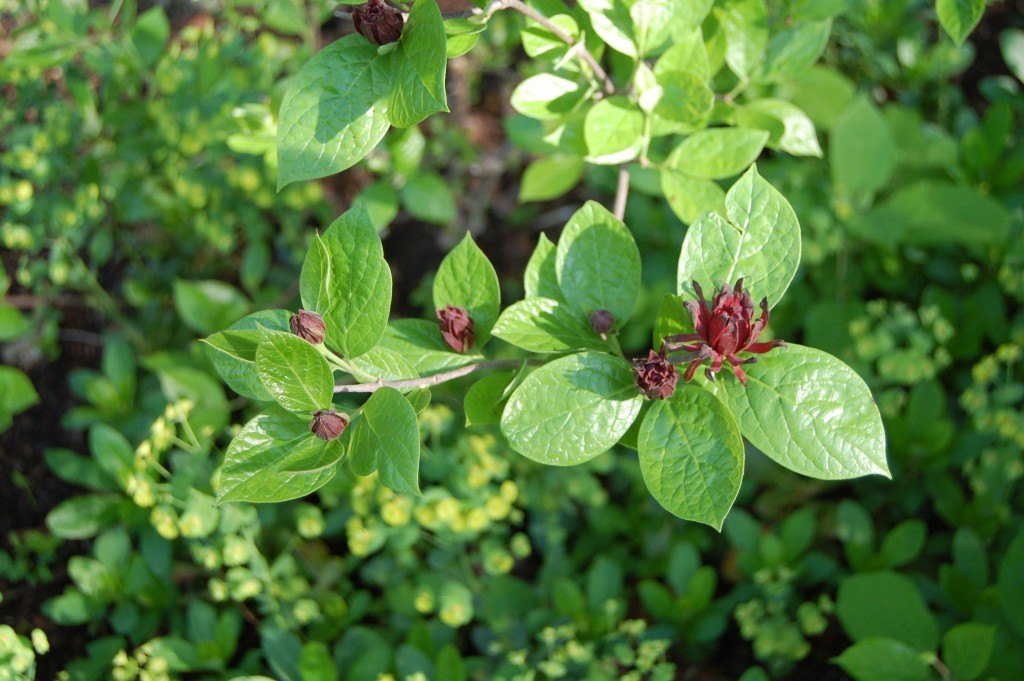
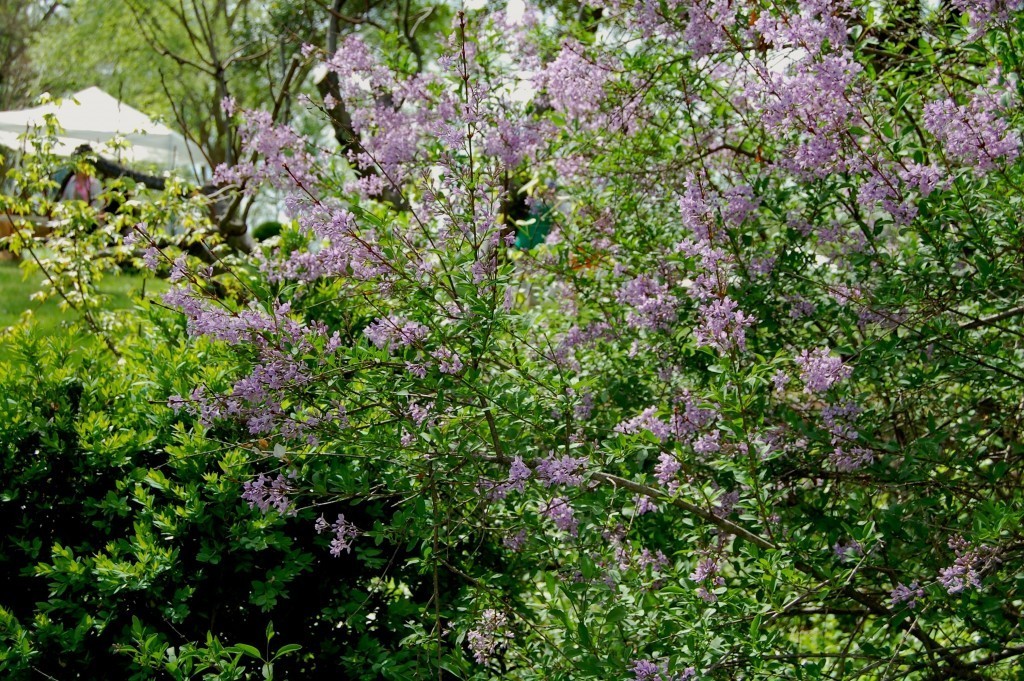
 The mantle arrangement above is a feast of textures and contrasting hues, with Photinia, Boxwood, Variegated Euonymus, Spanish Bluebells, Lenten Rose, Pachysandra and Native Azalea. Photo by Betsy Trow.
The mantle arrangement above is a feast of textures and contrasting hues, with Photinia, Boxwood, Variegated Euonymus, Spanish Bluebells, Lenten Rose, Pachysandra and Native Azalea. Photo by Betsy Trow.
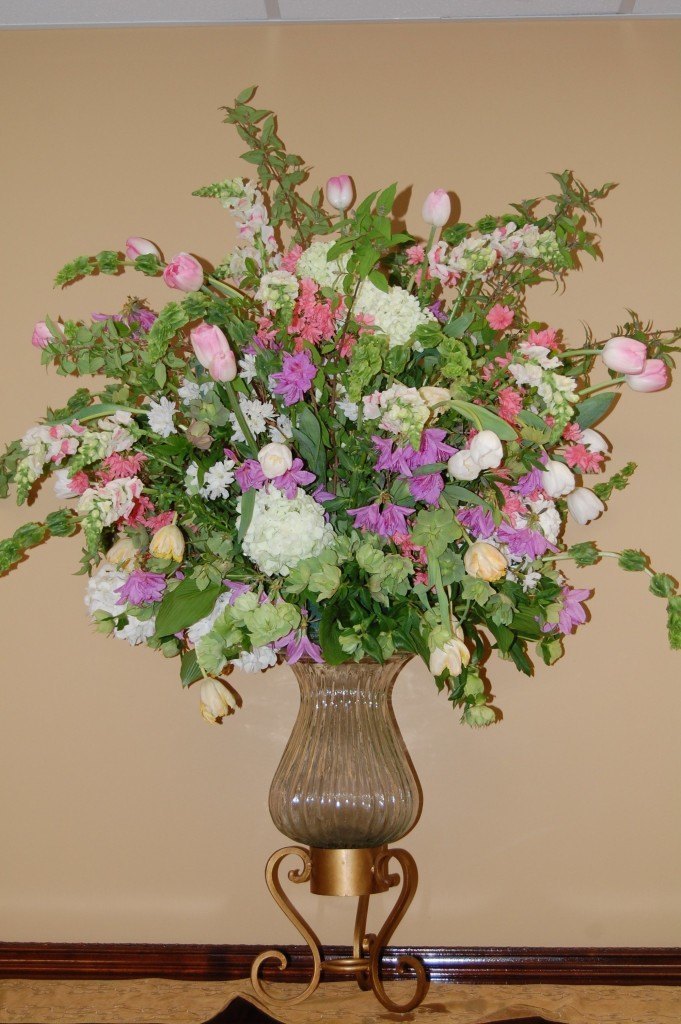 This arrangement welcomes spring in all its glory. Pink and peach Tulips, pink and lavender Azaleas, and pink Snapdragons blend beautifully with Snowball Viburnum (the OTHER Snowball Viburnum, Viburnum macrocephalum), Lenten Rose, Deutzia gracilis and greens.
This arrangement welcomes spring in all its glory. Pink and peach Tulips, pink and lavender Azaleas, and pink Snapdragons blend beautifully with Snowball Viburnum (the OTHER Snowball Viburnum, Viburnum macrocephalum), Lenten Rose, Deutzia gracilis and greens.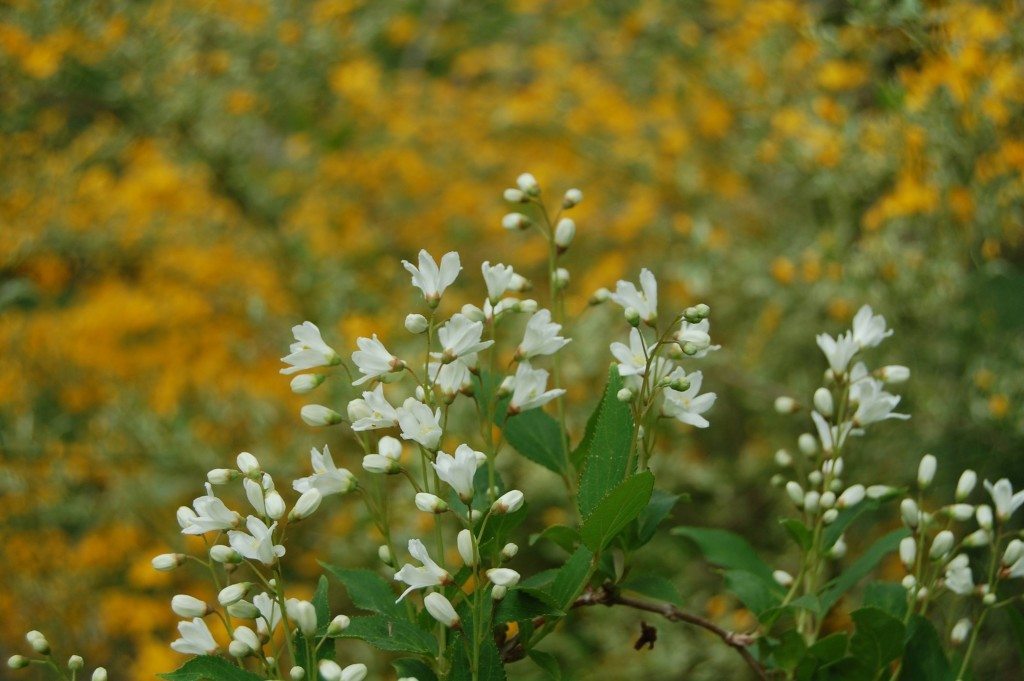
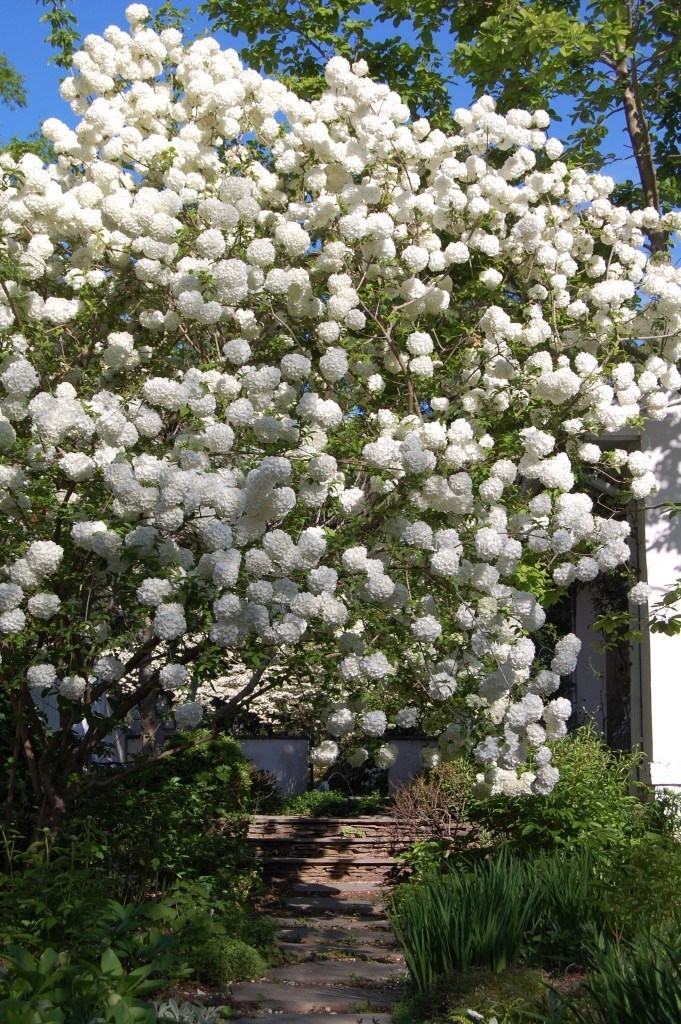

















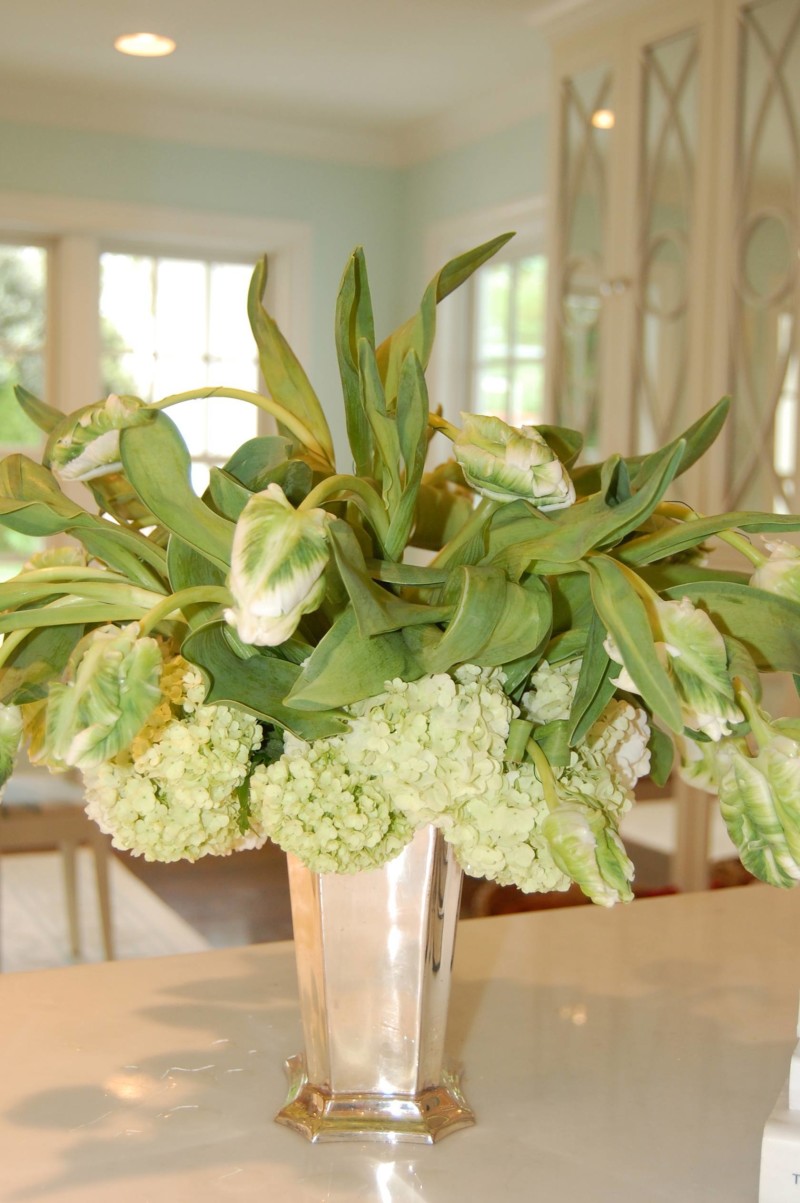
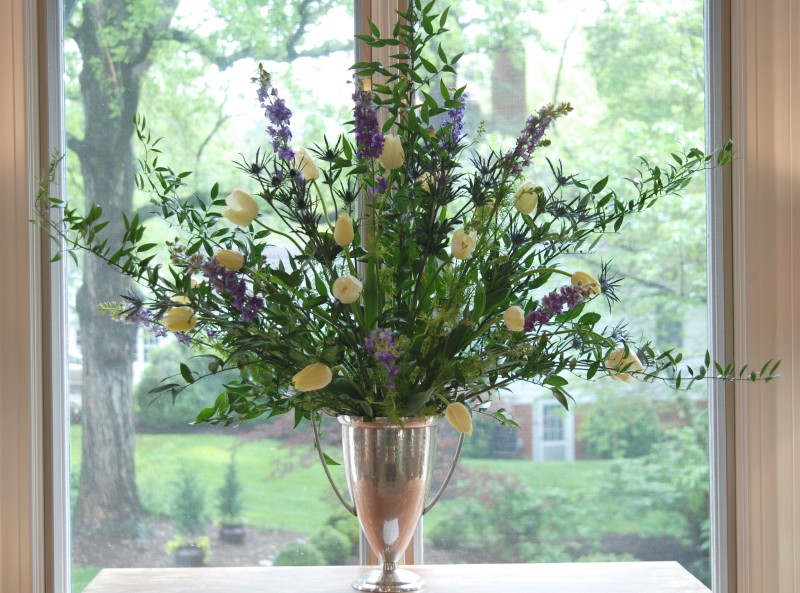
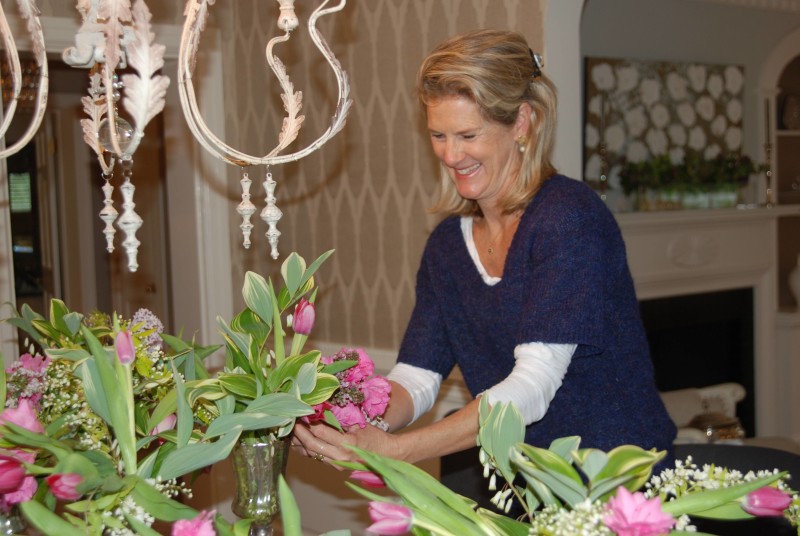
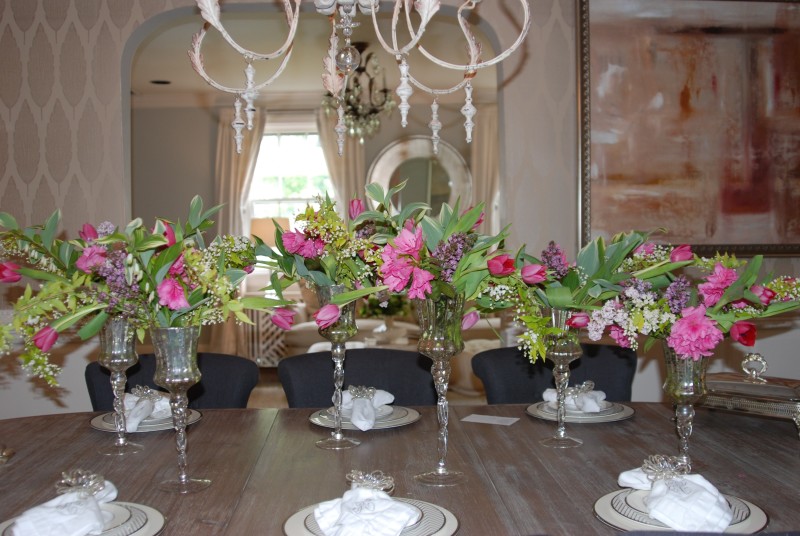
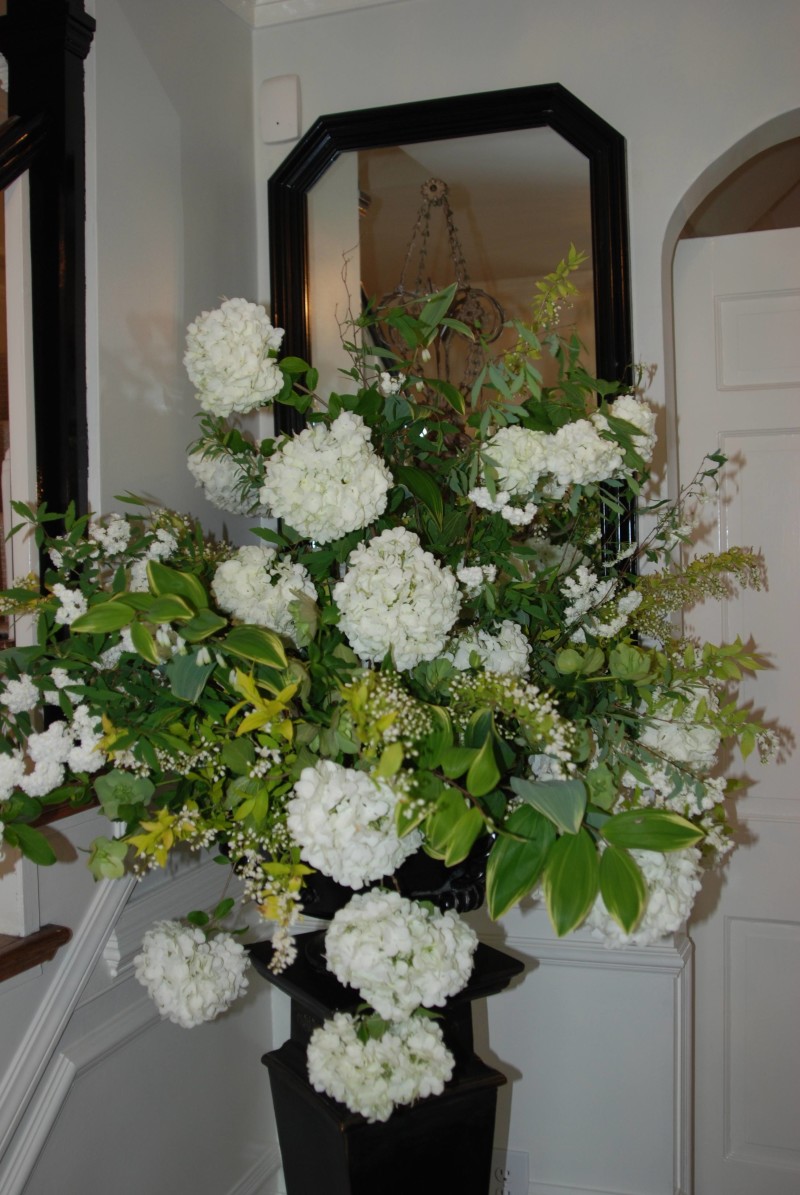
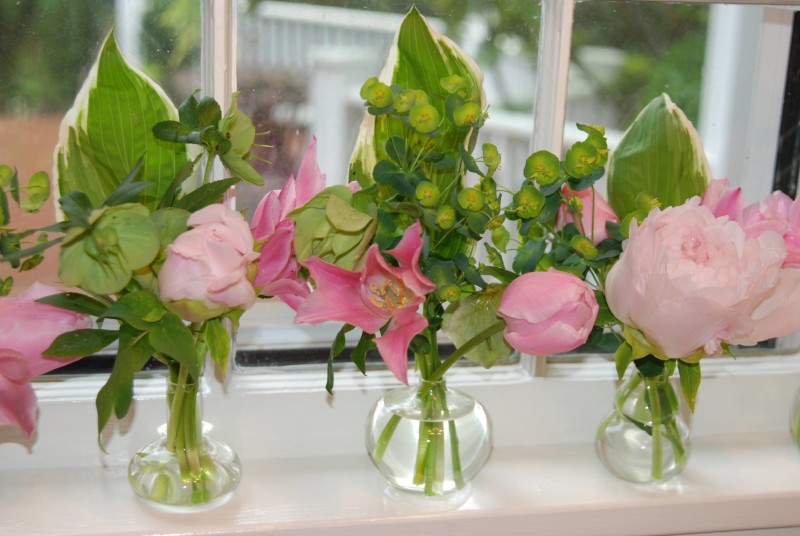
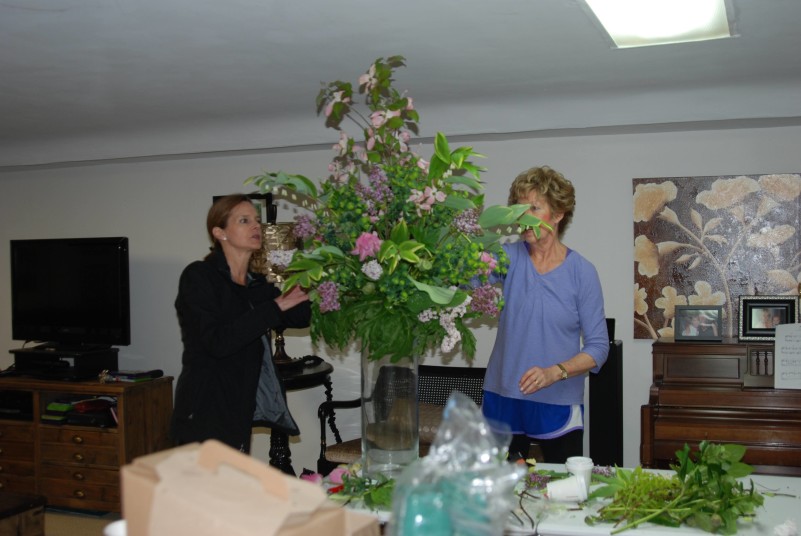
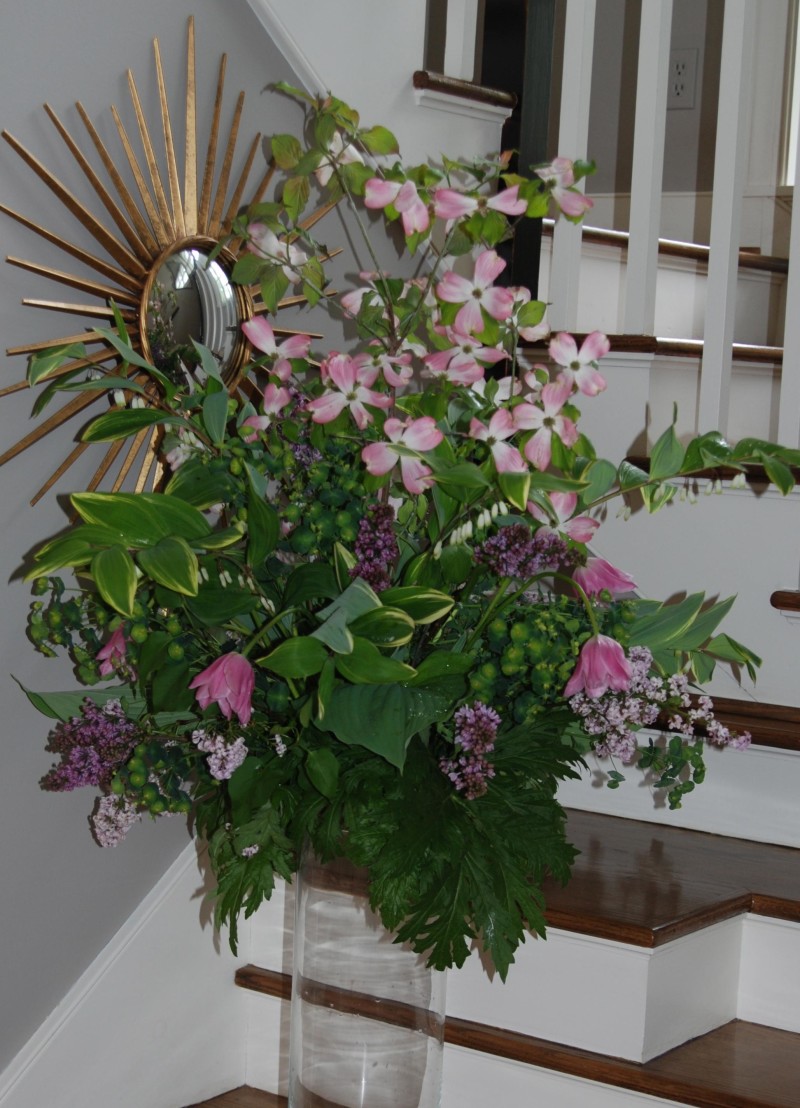
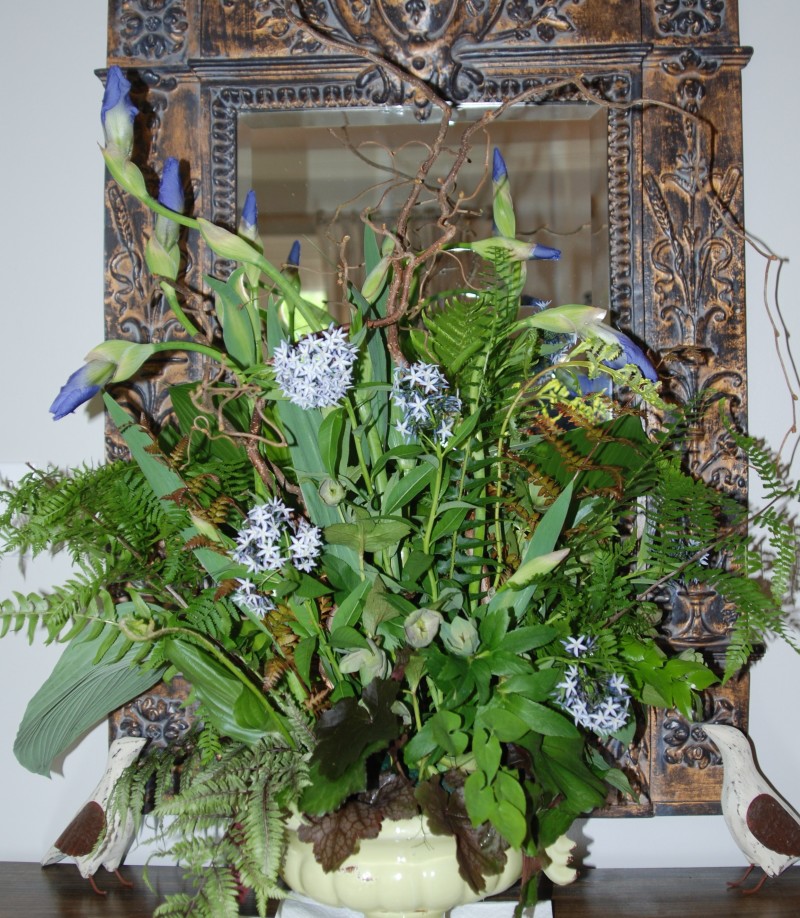
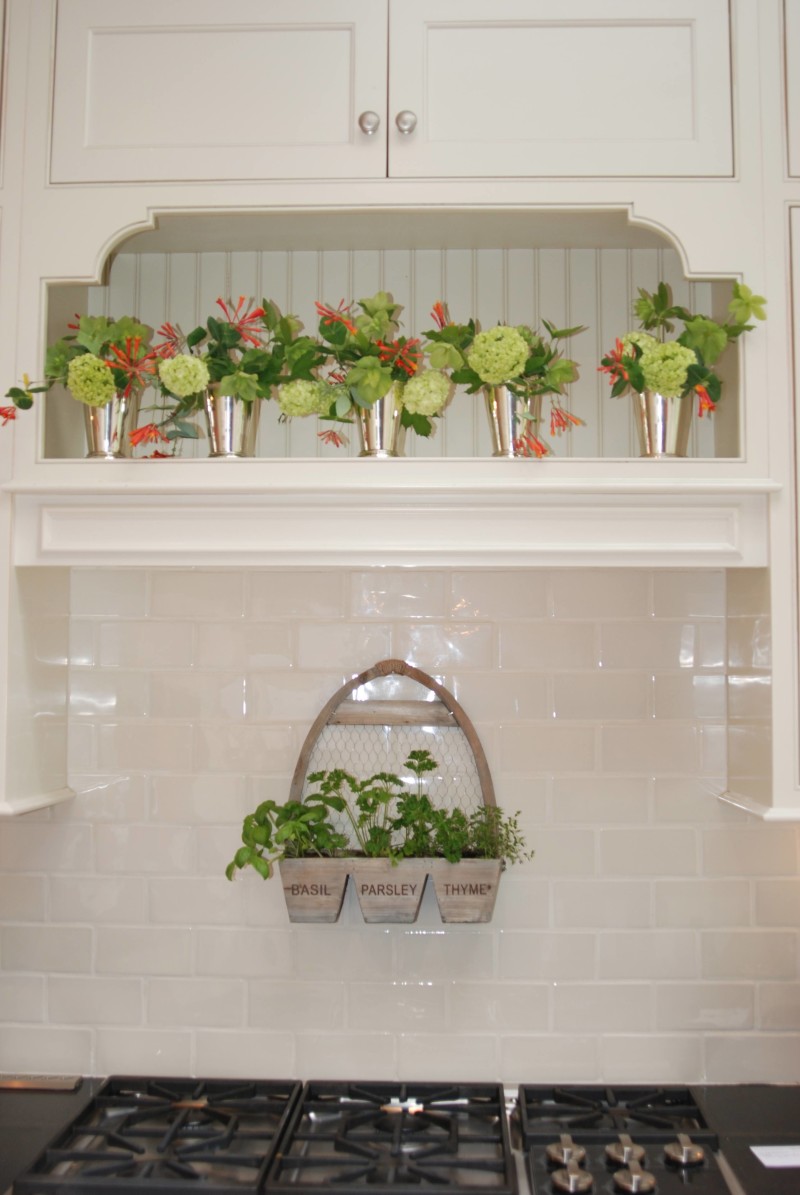
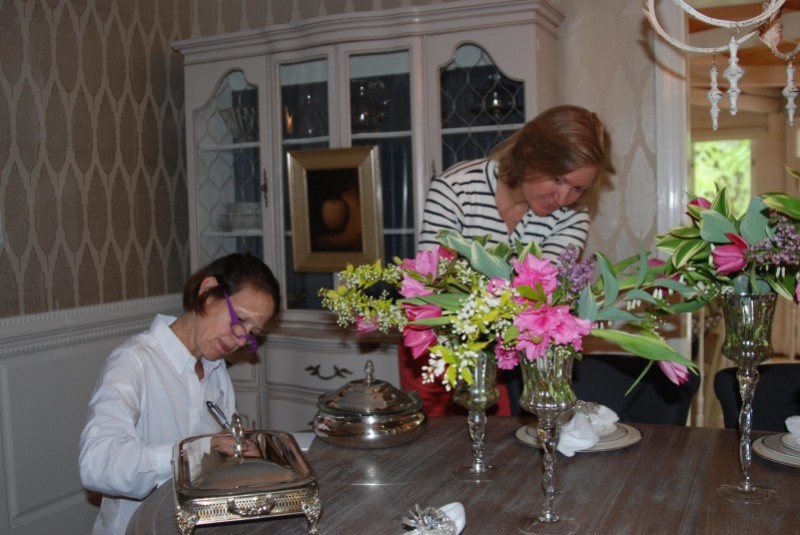
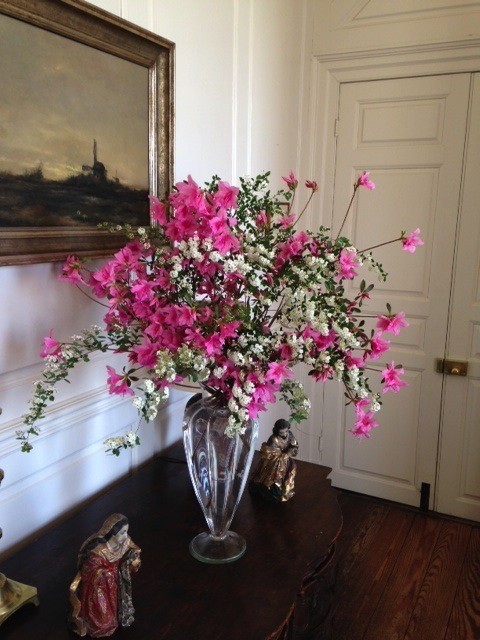 At Westover (I
At Westover (I 